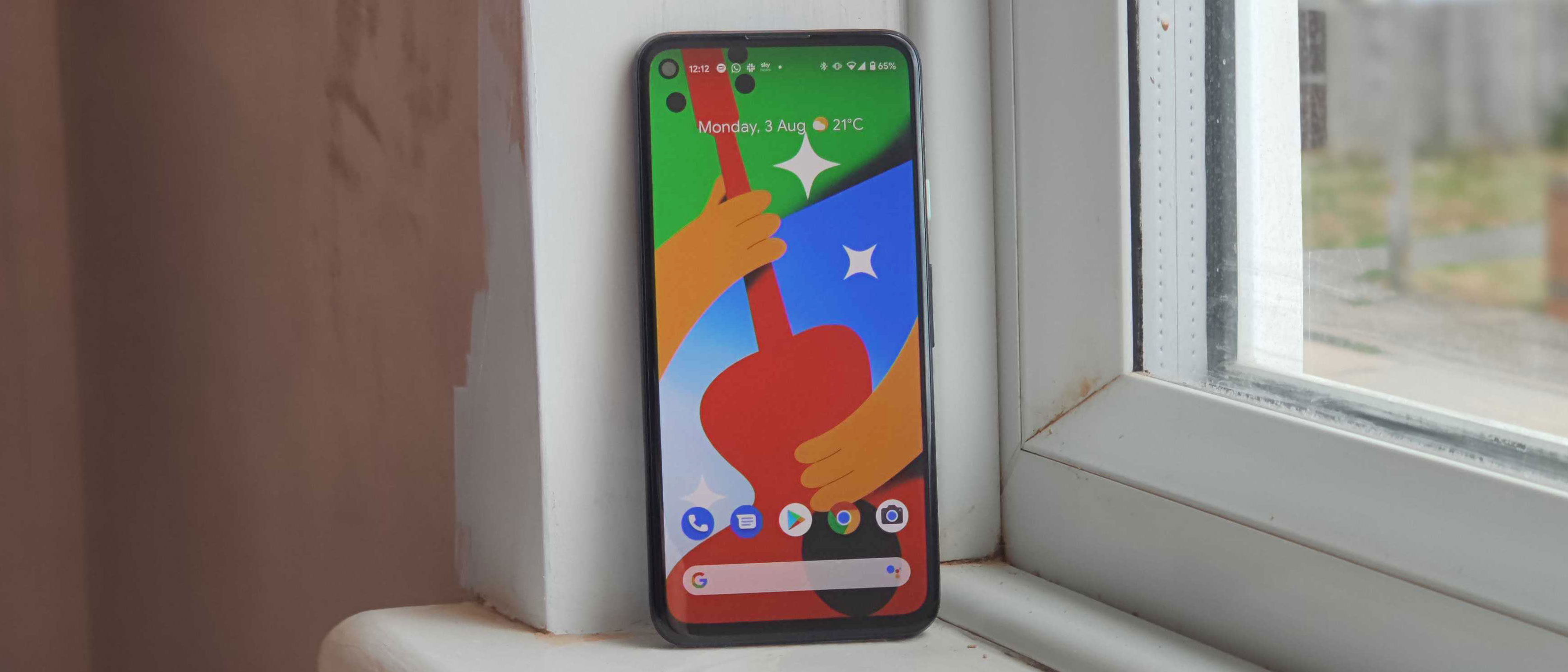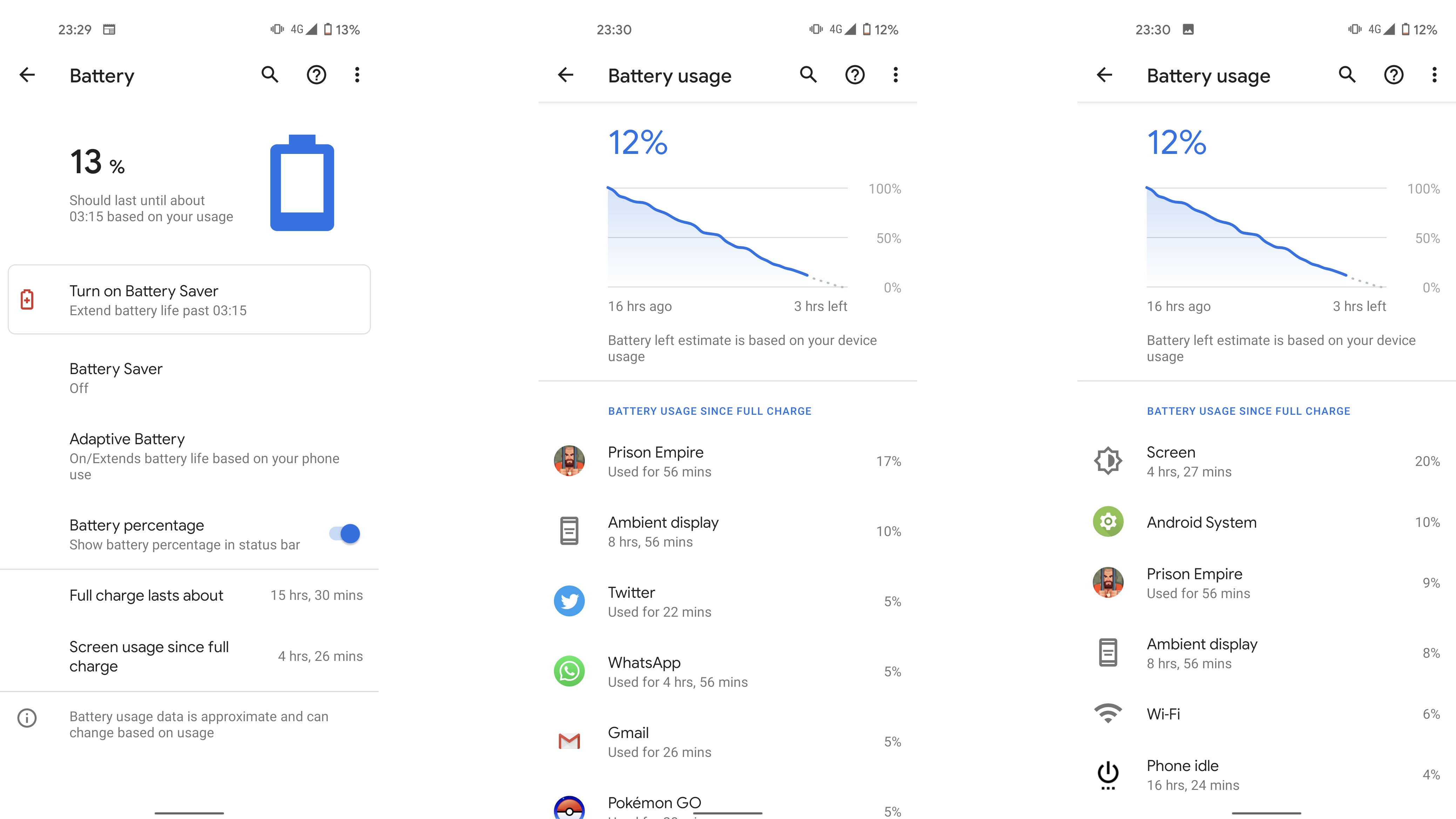TechRadar Verdict
The compact size, clean interface and great point-and-shoot camera of the Pixel 4a will appeal to those looking for an affordable, reasonably sized handset with enough grunt to handle the basics, plus the ability to capture some excellent pictures.
Pros
- +
One-handed use possible
- +
Powerful single camera
- +
Headphone jack
Cons
- -
Mediocre battery life
- -
No 5G (yet) or wireless charging
- -
Cheaper-feeling design
Why you can trust TechRadar
Two minute review
This Google Pixel 4a review was written when the phone was new; since then, we've seen the Pixel 5 and Pixel 6 generations, as well as the Pixel 5a and Pixel 6a. But if you're fine with buying an older phone, there's still a lot to like here.
There's slick Google Assistant integration, a clean Android interface with three years of guaranteed updates, and a seriously impressive photography experience considering the Pixel 4a has just one rear camera.
However, pull out the spec sheet and compare it to similarly priced rivals and the Google Pixel 4a doesn't seem like such a great deal, with less power, less RAM, fewer cameras, a smaller screen and no 5G connectivity - although the Pixel 4a 5G variant is coming in mere weeks with even better specs albeit at a higher price, alongside the Google Pixel 5 (which will also be 5G enabled).
Battery life is mediocre, with the phone just about lasting a day on a single charge – and if you really push it you'll be reaching for a charger come late afternoon.
The design will be divisive. On the one hand it's a cutesy, curvy polycarbonate handset that sits comfortably in the palm, and its lightweight frame makes it easy to hold and use. There's a rear-mounted fingerprint scanner, there's almost no screen bezel, and there's even a headphone jack.
On the other hand, it feels a little cheap, and it lacks the premium gloss of other handsets in its price bracket.
If you're thinking about getting the Google Pixel 4a you'll need to carefully consider what's important to you when it comes to a new smartphone. If you're looking for maximum bang for your buck, and features galore, the Pixel 4a is unlikely to whet your appetite.
Sign up for breaking news, reviews, opinion, top tech deals, and more.
That said, its compact size, clean interface and great point-and-shoot camera will appeal to those looking for an affordable, reasonably sized handset with enough grunt for social media, web browsing and emails, plus the ability to capture some excellent pictures.
Check out our special Google Pixel 4a unboxing video below
Google Pixel 4a release date and price
- Google Pixel 4a release date: Aug 20 (US), Sep 10 (AU), Oct 1 (UK)
- Google Pixel 4a price: $349 / £349 / AU$599
- Just one configuration, one color and no larger Pixel 4a XL
The Google Pixel 4a price is $349 / £349 / AU$599. There are no configuration options, there's no, larger Pixel 4a XL, and there's only one color: Just Black. If you want the Pixel 4a, you'll have to sacrifice choice for that low price tag.
That's a competitive price point, and one that's $50 / £50 / AU$50 cheaper than the launch price of its predecessor, the Google Pixel 3a. You also get more RAM (6GB vs 4GB) and more storage (128GB vs 64GB) with the Pixel 4a, so Google is giving you a decent amount of bang-for-your-buck, at least within its own ecosystem. Compared to the Google Pixel 4a 5G, which has better specs but costs more at $499 / £499 (around AU$695), the standard Pixel 4a remains a bargain.
Weight: 143g
Dimensions: 144 x 69.4 x 8.2 mm
Display size: 5.81-inch
Resolution: FullHD+ (1080 x 2340)
Pixel density: 443ppi
Chipset: Snapdragon 730G
RAM: 6GB
Storage: 128GB
Rear camera: 12.2MP
Front camera: 8MP
Battery: 3,140mAh
It's also comfortably cheaper than its flagship namesakes, the Pixel 4 and Pixel 4 XL.
Trouble is, the Google Pixel 4a is playing in a highly-competitive middle market, and is up against some handsets with far more impressive spec sheets – the likes of the OnePlus Nord, Realme X50 5G, Moto G 5G Plus and Mi Note 10 Lite can dazzle consumers with their multiple cameras, larger screens and 5G connectivity.
While the handset itself won't differ between regions, when you could actually buy it did. The Google Pixel 4a landed in the US on August 20, 2020, with it following on September 10 in Australia and October 1 in the UK.
Explaining the reason for the staggered release date, a Google spokesperson told TechRadar that "our supply chain was impacted by Covid-19 and we had to adjust our launch plans accordingly to ensure the safety of our employees, partners and customers."
- These are the best Google Pixel 4a deals for you right now

Design
- Cute, minimalist design can easily be used one-handed
- Headphone jack included, plus stereo speakers
- Lacks a premium finish
Cute. That's the one-word answer to 'describe the Google Pixel 4a design'.
It's one of the more compact Android smartphones you can get hold of these days, measuring 144 x 69.4 x 8.2mm, which makes it smaller than the Pixel 3a while boasting a bigger screen.
The result is a handset which is extremely easy to handle, and one-handed use is almost effortless. Those with smaller hands could still find it a bit of a stretch to reach the top of the display, but it sits comfortably in the palm.
It's light too, tipping the scales at just 143g, which makes it lighter than the Pixel 3a and the iPhone SE (which is actually smaller than the Pixel 4a).
That's due to the Pixel 4a's polycarbonate unibody – and while it helps the handset shed some weight, this does also mean that it doesn't look or feel particularly premium.
You may not see that as an issue, especially considering the affordable price, but for the same price you can get hold of metal- and glass-covered handsets that look and feel much more premium. The plus side here is that there's less glass to potentially smash, and the polycarbonate finish feels solid and hard-wearing.
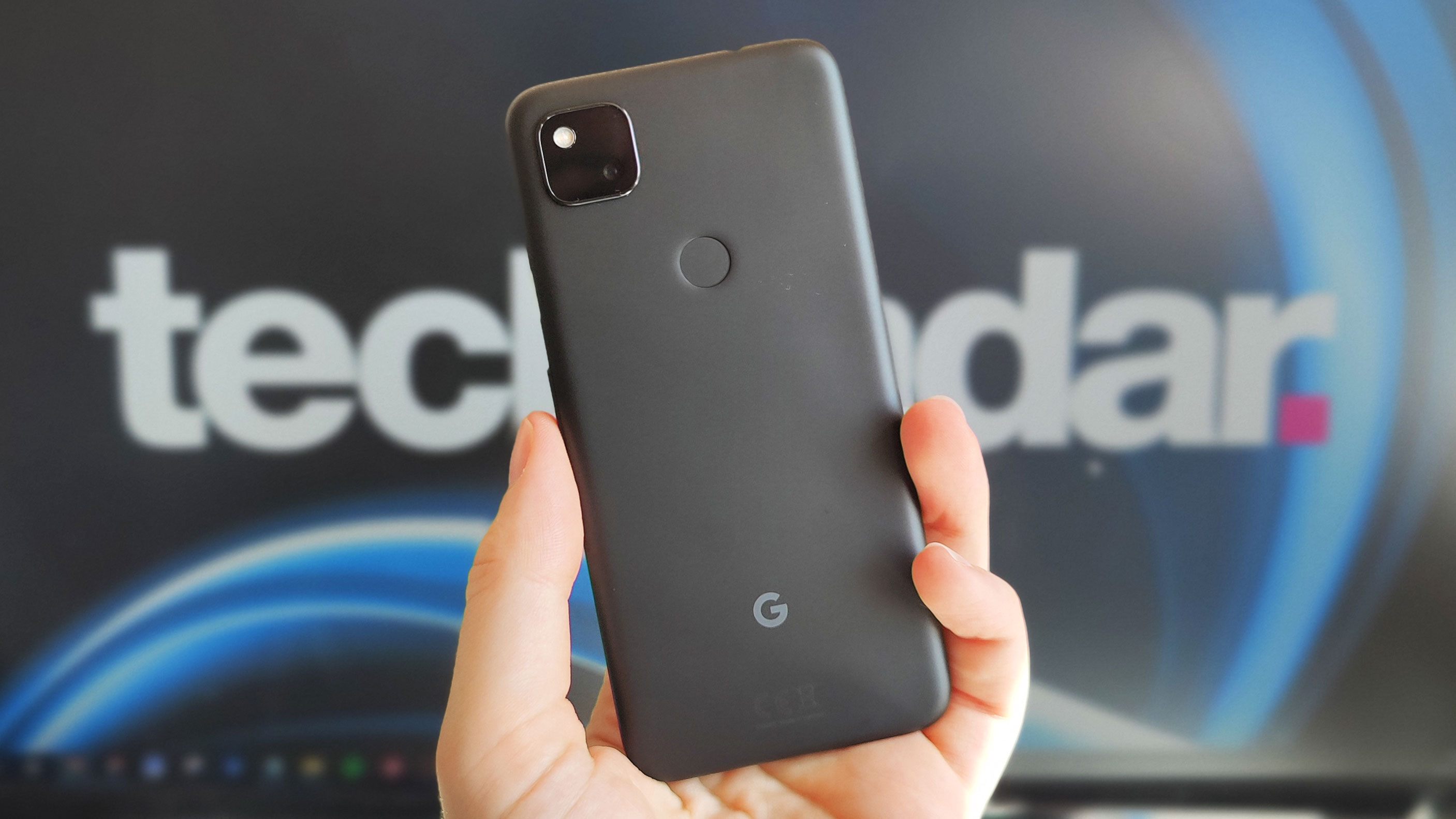

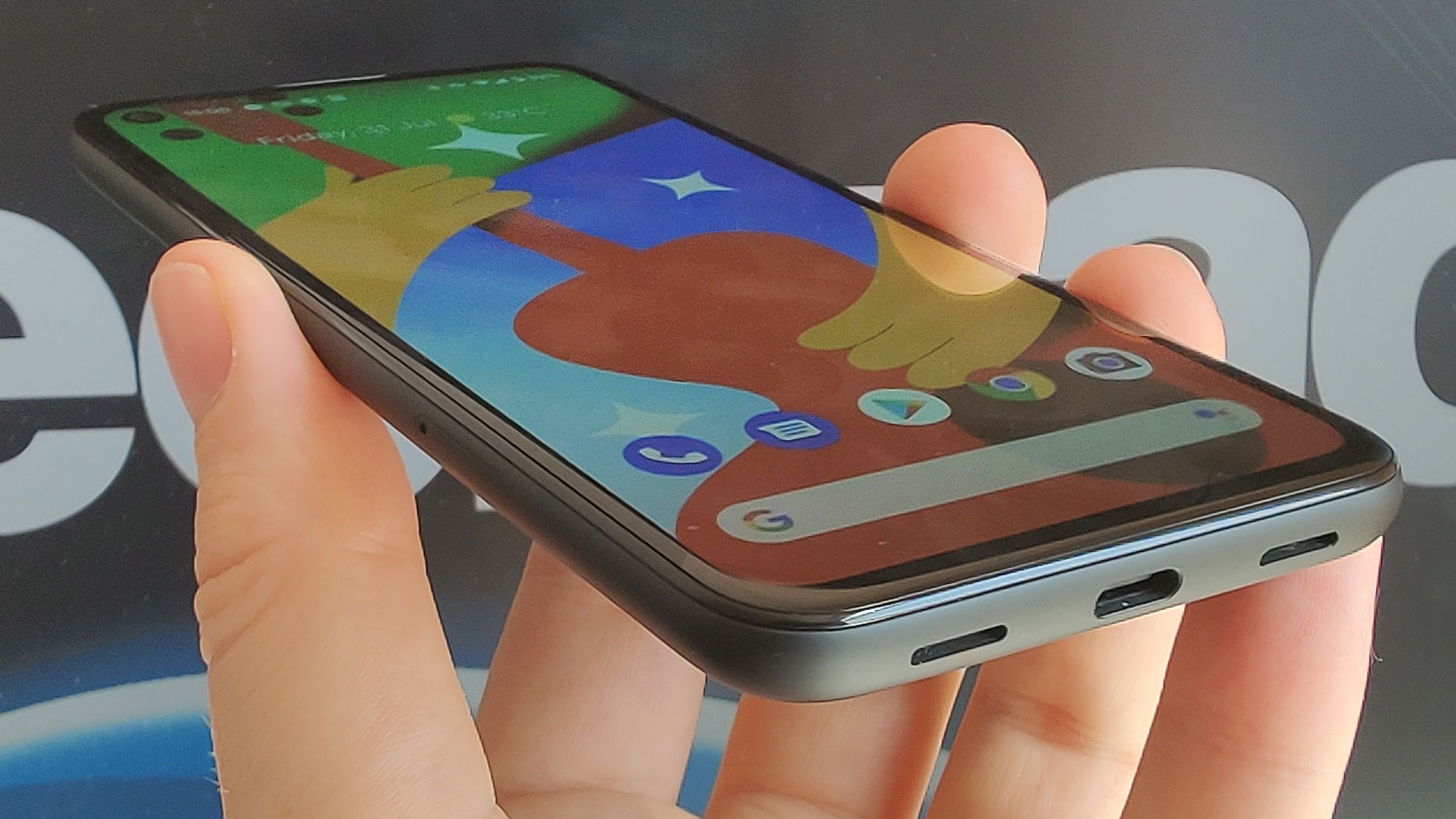


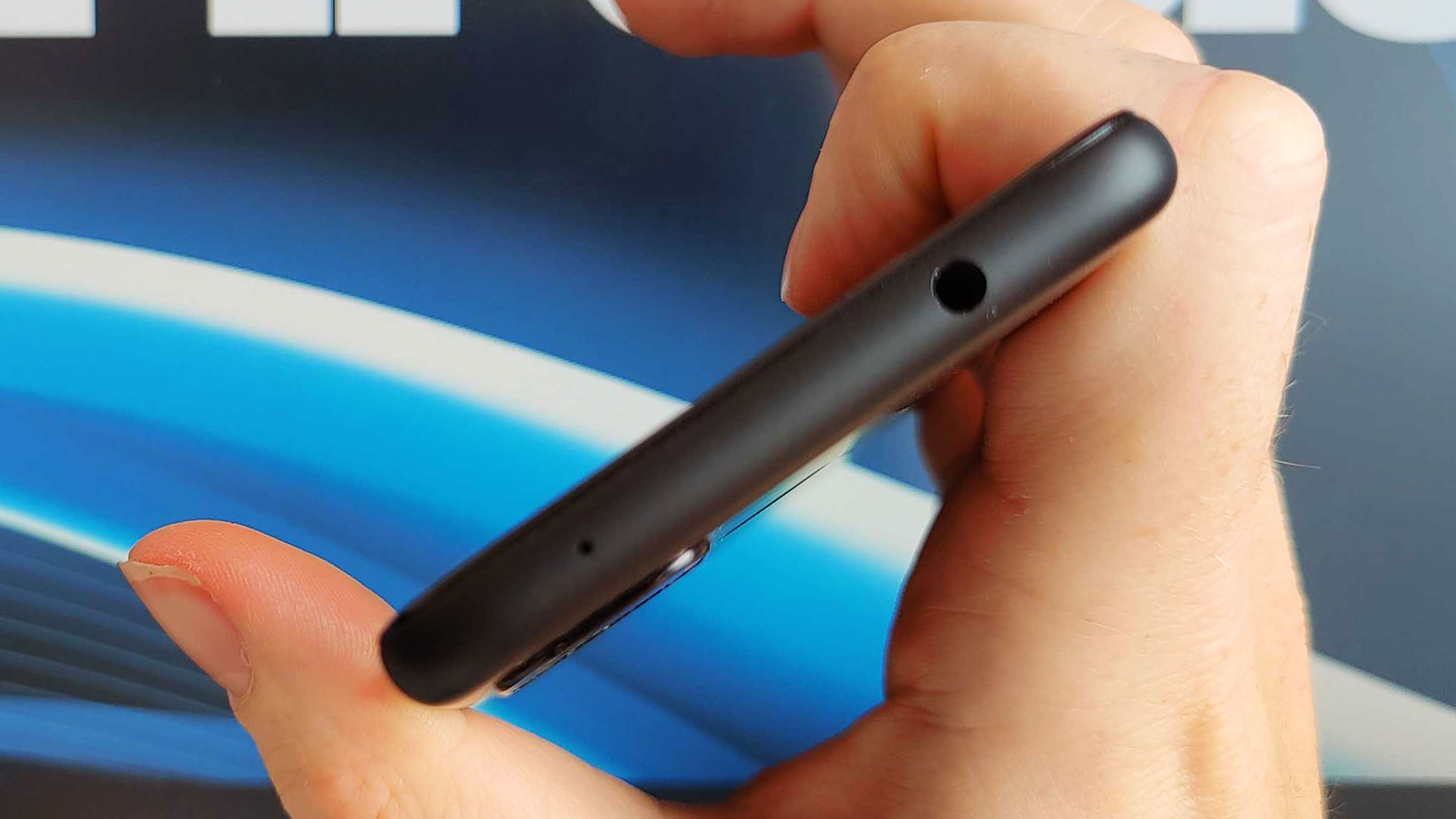

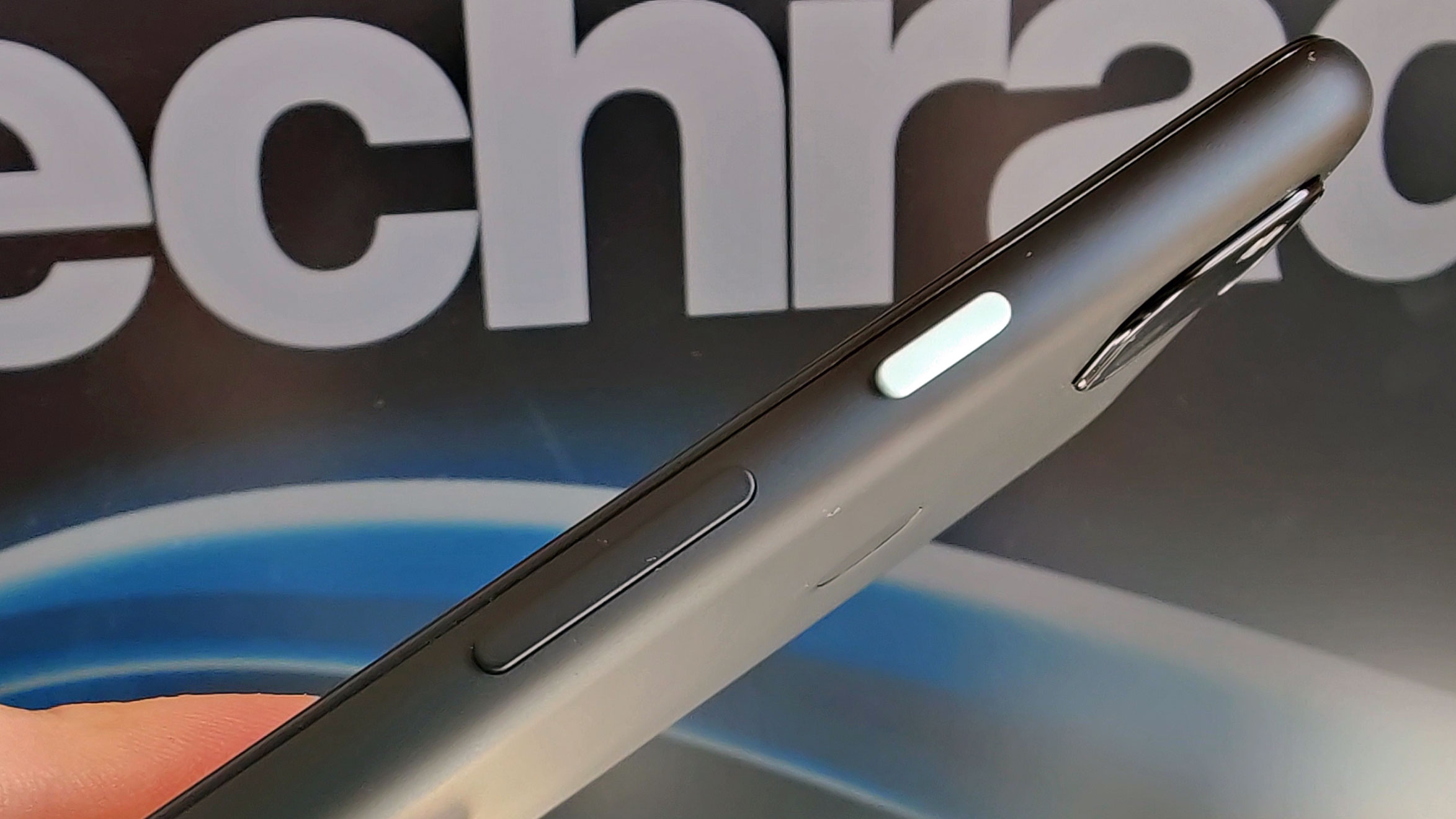
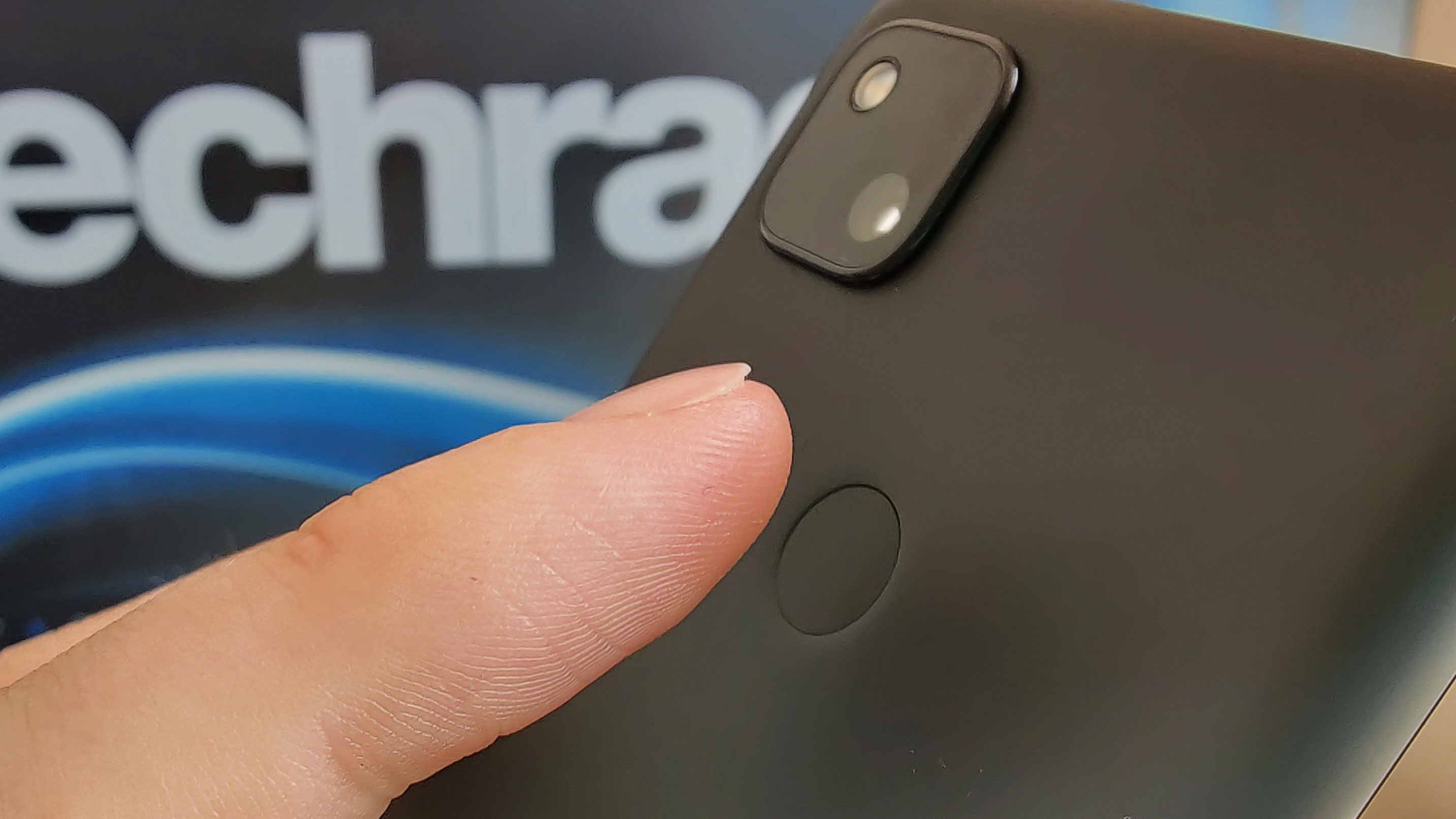

You'll find the mint-green accented power/lock key situated conveniently under thumb or finger on the right of the handset, with a black volume rocker just below, while the SIM tray is on the opposite side – this can only hold a single SIM, but the Google Pixel 4a also comes with a built-in eSIM card.
An eSIM (embedded SIM) is a digital version of the SIM card that you use to connect your phone to a network provider. The chip can be reprogrammed to suit whatever carrier you want to use; however not all carriers support eSIM, so you'll need to check with your provider whether you'll be able to use this function in the Pixel 4a.
It's also worth noting that eSIM functionality is only enabled for a select number of countries: the US, UK, Australia, Canada, Spain, Germany, Taiwan and Japan.
On the bottom of the Pixel 4a you'll find a USB-C 3.1 port in the center, flanked by microphone and speaker grilles. The down-firing speaker works with a second speaker just above the display to provide you with stereo sound.
A feature the Google Pixel 4a has carried over from its predecessor – and something the flagship 4 series doesn't have – is a 3.5mm headphone jack. It's located on the top edge of the handset, allowing you to plug in your wired headphones.
You don't get a pair of earbuds in the box (unless you're in France or Australia, where you do), but if you have a set of favored cans you can use them with the Pixel 4a without having to dig out an adapter – and with no adapter occupying the USB-C port you can charge the handset at the same time as using wired headphones.
Another feature borrowed from the Pixel 3a is the rear fingerprint scanner. Google dropped fingerprint scanning for the Pixel 4 and 4 XL in favor of facial recognition, but we're pleased to see the digit-based sensor return on the Pixel 4a.
It falls comfortably under the forefinger, and recognition is fast – we didn't experience any errors during our review period.

The only minor niggle with rear-mounted fingerprint sensors is they can't be used when the phone is placed on a desk or side table, which means you'll have to either tap in your passcode or pattern, or pick the Pixel 4a up to reach the sensor. There's also no face unlock support.
Overall, the Pixel 4a has a minimalist design, with the centrally located fingerprint scanner and square camera block in the top-left corner the only points of note on the rear.
Considering the phone has just one rear-facing camera, the size of the camera block seems a little excessive, but it's presumably a design decision from Google as it looks to mimic the square bump on the rear of the Pixel 4 and 4 XL.
On the plus side, the bump isn't raised all that much from the rear of the phone, which means you can place it on a surface and tap away at the screen with minimal wobble.
While the compact form factor of the Pixel 4a will appeal to many, in 2019 we also got the larger Pixel 3a XL, which offered much of the same specs as its smaller sibling, but with a larger 6-inch display (vs 5.6-inch) and larger battery.
So why is there no Google Pixel 4a XL? A Google spokesperson told TechRadar that "without bezels on the display, we're now able to fit more display in a compact form factor. We think 5.8-inch is the perfect size for our Pixel 4a customer.
"The screen size increased 4.5% while the overall device size decreased 5.8% [versus the Pixel 3a], with a more polished industrial design."
Whether 5.8 inches is enough real estate for your smartphone pursuits will be a decision you'll have to make, but if you’re looking to play intensive games, or look at complex applications, you may want to consider a device with a larger screen.
Display
- 5.81-inch OLED display with Full HD+ resolution and HDR support
- First all-screen, bezel-less Pixel phone
- It's bright, clear and responsive
Talking of the Google Pixel 4a display, let's take a closer look at it. As we've already established, it's larger (by 0.2 inches) than the Pixel 3a's screen, but Google has taken things a step further with the Pixel 4a, and done away with the bezels almost entirely.
This is the first Pixel smartphone to come with an all-screen, bezel-less display, with the screen flowing around the punch-hole that houses the front-facing camera in the top-left.
While Google says it has removed the bezels on the Pixel 4a, if you look closely there's still a sliver at the base of the display and the edging around the rest of the display is thicker than we've seen on some rivals.
Still, it provides for an aesthetically pleasing finish, and while the selfie camera does sit in the notification bar, it doesn’t really reduce the number of icons that can be displayed, which is nice.
Google even includes some custom wallpapers which take into account the camera appearing within the display itself – just long-press on the home screen and tap "style & wallpapers" to check them out in the ‘For Fun’ folder.
We've seen similar wallpapers on other handsets, such as the Galaxy S10 series, and we'd expect to see a bunch of fan-made options to hit the web in the coming months.

The screen is protected by Gorilla Glass 3, which should protect it against small scruffs and scratches, but it’s not the most advanced version of the toughened glass from Corning – the OnePlus Nord, for example, uses the fifth-generation glass on both its front and rear, while the Sony Xperia 1 II features the latest, sixth-generation glass.
Using the older glass is a clear cost-saving measure by Google, but as long as you're reasonably careful with the phone it shouldn't be an issue.
The 5.81-inch screen is an OLED panel with a Full HD+, 1080 x 2340 resolution equating to a pixel density of 443ppi, and a 19.5:9 aspect ratio.
The screen provides bright, clear and colorful visuals, and thanks to the handset's diminutive size it's each to reach pretty much all corners of the display.
Watching the HDR-enabled Space Force on Netflix was a pleasing experience, with excellent detail and color reproduction; however – and yes, we are going to say it – having moved from the OnePlus Nord to the Google Pixel 4a, the screen did feel a little small.
The Google Pixel 4a also features an always-on display, which will permanently display the time, date, battery level, weather and other information depending on the situation; for example, if you have alarms set it'll show your next alarm, and if you're listening to music on the Pixel 4a it'll show you the track name and artist.
It will also display notification icons, alerting you to new messages and information, and allowing you to decide whether or not you need to reach for your phone.

Camera
- Just two cameras: 12.2MP on rear, 8MP on front
- Impressive image processing produces high-quality snaps
- Night Sight produces decent low-light shots
The Google Pixel 4a is in the minority when it comes to cameras, having just two: one on the back and one on the front.
There aren't too many other phones with so few cameras, especially in the crowded mid-tier, where manufacturers tend to scatter cameras around like confetti in order to try and make their handsets stand out, although the new iPhone SE is another.
On the back you get a 12.2MP camera with a f/1.7 aperture and an 84-degree field of view. It can shoot 4K video at 30fps, 1080p at 30fps, 60fps and 120fps, and 720p at 30fps, 60fps and a super-slow 240fps.
While it may not look like much on paper, especially when compared to the three- and four-camera setups on the back of many of the Google Pixel 4a's rivals, this main camera can still hold its own.
The Pixel 4a makes photography easy – just point and shoot, and most of the time the camera, combined with Google's intelligent software processing, means you'll get a great photo in many scenarios.

There are a handful of modes to choose from if you want something slightly different, including panorama and portrait, the latter of which produces a background blur effect using purely AI, as there's no depth sensor on the Pixel 4a.
The results from both are good, and portrait mode is especially impressive given the relatively simple hardware on offer.
If you look carefully, you can see some of the stitching in panoramas, especially if you don't have the steadiest hand when shooting, and the background blur sometimes isn't as precise around your subject, depending on how complex the shape is.
That said, for a handset with such an affordable price tag, the photography prowess is still impressive.
Forgot to switch to portrait mode? You can apply a bokeh effect to photographs you've already taken – even ones from years ago taken with a different device – by heading to the Photos app, tapping edit and then using the blur slider to create the effect.
We tried it with a couple of snaps we'd taken while reviewing the OnePlus Nord a couple of weeks previously, and the Pixel 4a was able to apply the background blur to the images without too much trouble.
If you're shooting a scene which has overly dark or bright areas, you can tap on a problematic area of the image to bring up the dual exposure controls and adjust the brightness of just that part of the frame, as part of the Pixel 4a's Live HDR+ plus feature. This gives you a live preview, for a better idea of how the final shot will look.

It allows you to take more balanced shots, and is especially useful if your subject is backlit – a situation where they can easily be cast into shadow.
You'll also be prompted to switch modes if the phone detects low light levels, with the camera app suggesting that you try Night Sight instead of the standard camera option.
Night Sight is one of the best night modes we've used on a smartphone, and while the hardware and processing power on the Pixel 4a aren't up to the levels of the phone's flagship siblings, it still does an impressive job after the sun sets.
There's a dramatic difference between the standard camera mode and Night Sight, with photos significantly brightened, but usually in a way which doesn't look too artificial. You'll need to hold the Pixel 4a still for a few seconds as Night Sight captures the scene at different exposure levels though – we'd recommend resting it against something, or using a tripod, for the best possible results.
It works much better outdoors, and as long as there's some sort of light source (it really doesn't need to be much) you can get clear shots, although the detail can be a little muddy. Night Sight can also be used indoors, but images tend to look grainier.
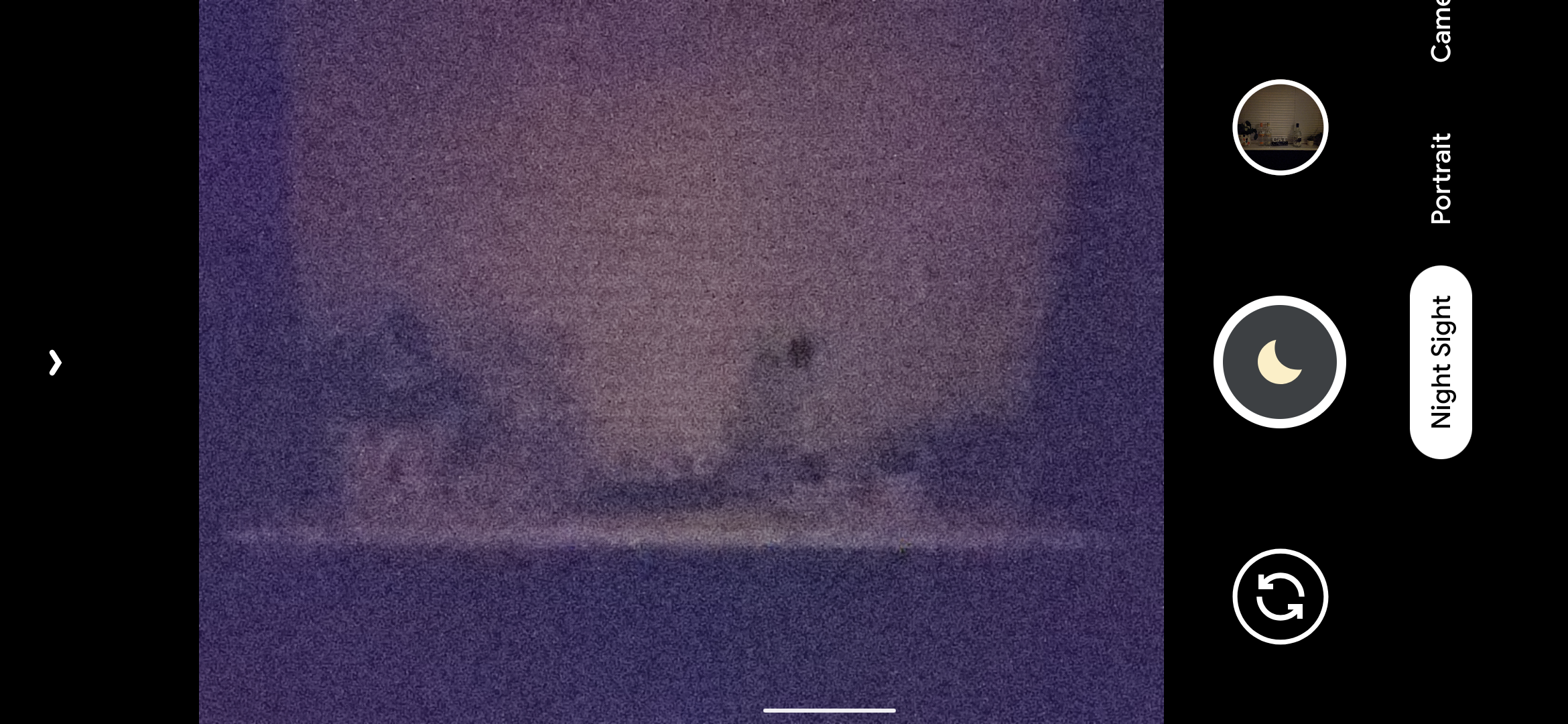
Night Sight has an additional mode built into it: astrophotography, which debuted on the Pixel 4, and there are several criteria you'll need to meet in order for this to work.
First you'll need to be outside at night, and it needs to be dark – and we mean really dark. In our residential area, it wasn't dark enough due to light pollution (even at 11pm) for the astrophotography mode to be triggered.
Second, you'll need to find somewhere to rest the Pixel 4a as it points at the stars, and if you're planning on using the Night Sight, and particularly astrophotography, modes frequently we'd recommend investing in a small tripod – you won't be able to use the astrophotography mode hand-held, as the phone needs to be stable, with zero hand shake.
And third, you'll need some patience. Once you've found your suitably dark location, and have the Pixel 4a set up rock-steady and pointing at the sky, after a few seconds the screen will read 'astrophotography on'. Hit the shutter button, and the handset will proceed to capture your shot – this can take between one and five minutes, so don't move the phone too early.
We were unable to find a suitably dark location during our initial review time with the Pixel 4a, but we're planning a rural escape in the coming days, and we'll update this review with our astro-mode results.
With just a single rear camera, the Pixel 4a doesn't offer an optical or hybrid zoom, relying solely on its imaging smarts to give you up to a 7x digital zoom – although while it may be purely digital, at 2x you'd be hard pushed to tell, unless you examined the snaps in detail.
The degradation in quality is a little more noticeable at 7x, but if you have a steady hand and there's good, natural outdoor light the Pixel 4a is capable of taking some pleasing zoomed-in shots.
Having just the single camera also means there's no wide-angle option, and nor is there a dedicated macro camera. There's not much you can do to get around the lack of a wide-angle camera, other than take a few more steps back if your surroundings allow, or perhaps switch to panorama mode.
While the latter allows you to capture sweeping vistas, or a socially distanced group of friends, it's not as convenient as a dedicated wide-angle camera. For many users, this won't be an issue, but if you're looking for maximum photography flexibility there are other handsets in the Pixel 4a's price range that can offer this.
Similarly, the lack of a macro camera is unlikely to be an issue for many users, and the Pixel 4a camera does an okay job of close-up photography, allowing you to get reasonably near to subjects and capture a good level of detail.

There's also just a single camera on the front of the Google Pixel 4a – it's an 8MP, f/2.0 snapper with an 84-degree field of view, and it can shoot 1080p video at 30fps.
There's the obligatory portrait mode, which can apply background blur for arty self-portraits, and Night Sight is also available on the front camera – we found this worked well when we were trying to snap a selfie in lighting that was less than ideal, as long as it wasn't really dark.
Overall, the front-facing camera on the Google Pixel 4a is a solid snapper, and produces selfies with good color and detail.
- These are the best cameras for beginners you can buy right now
Camera samples
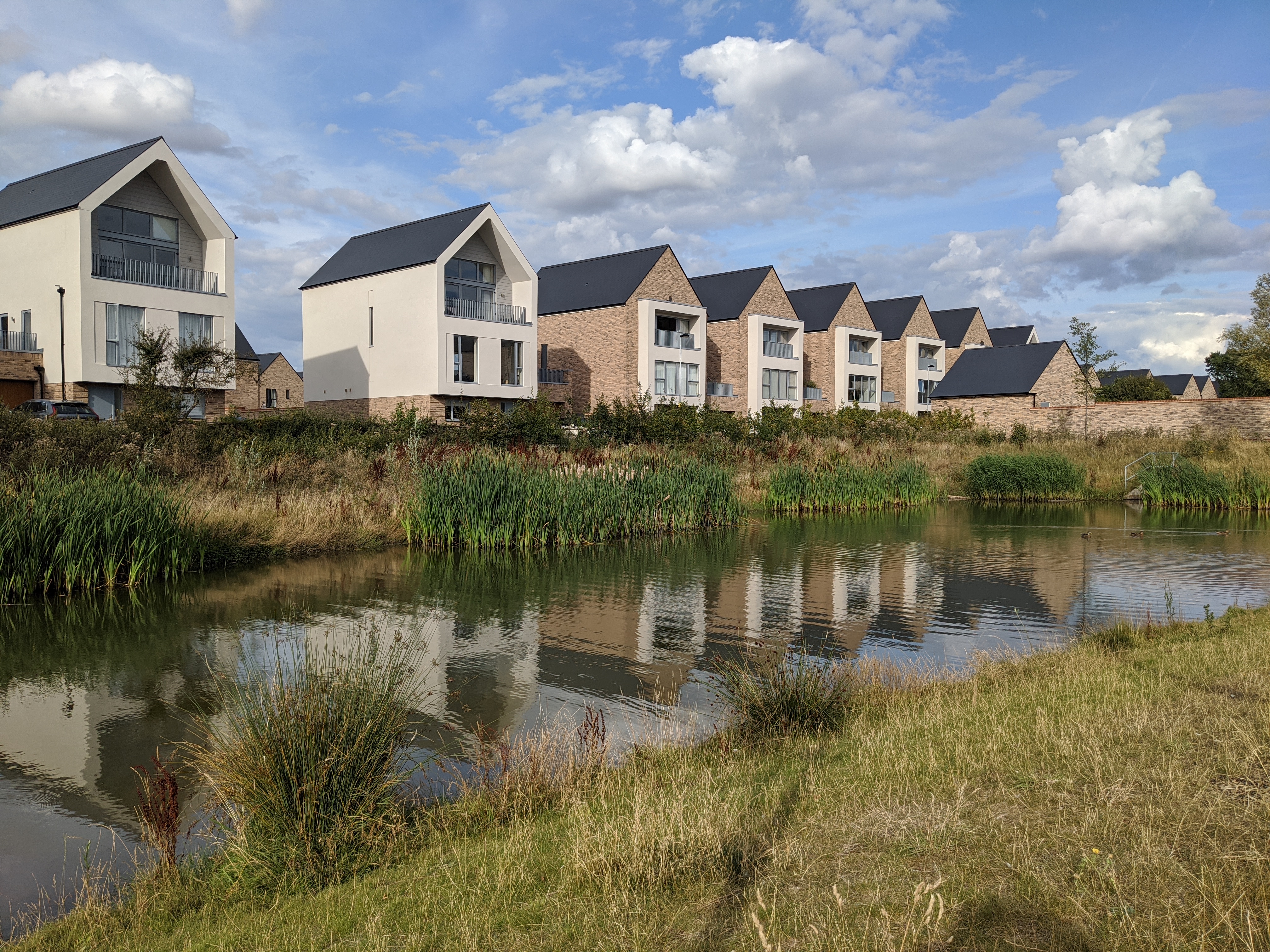


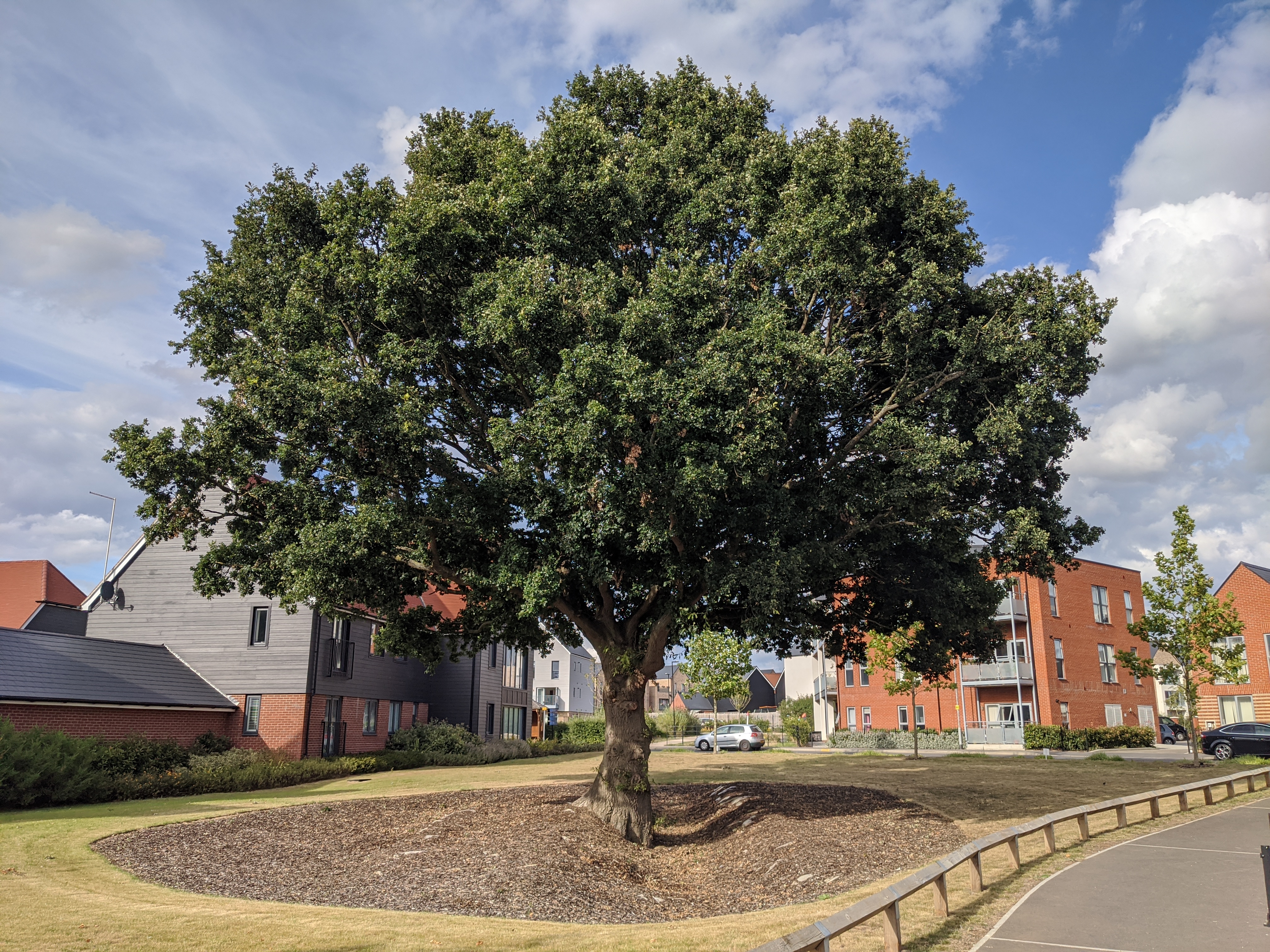
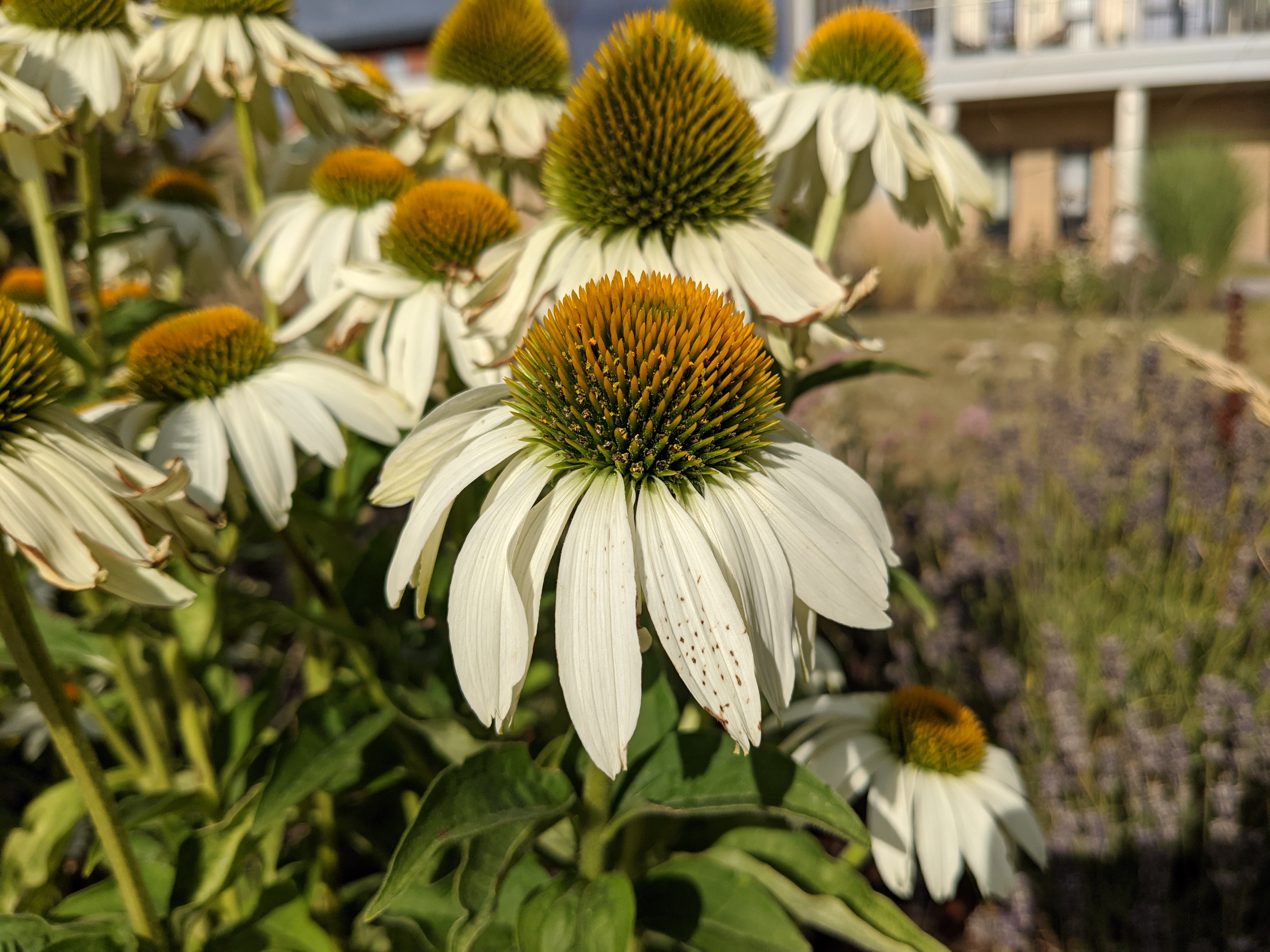

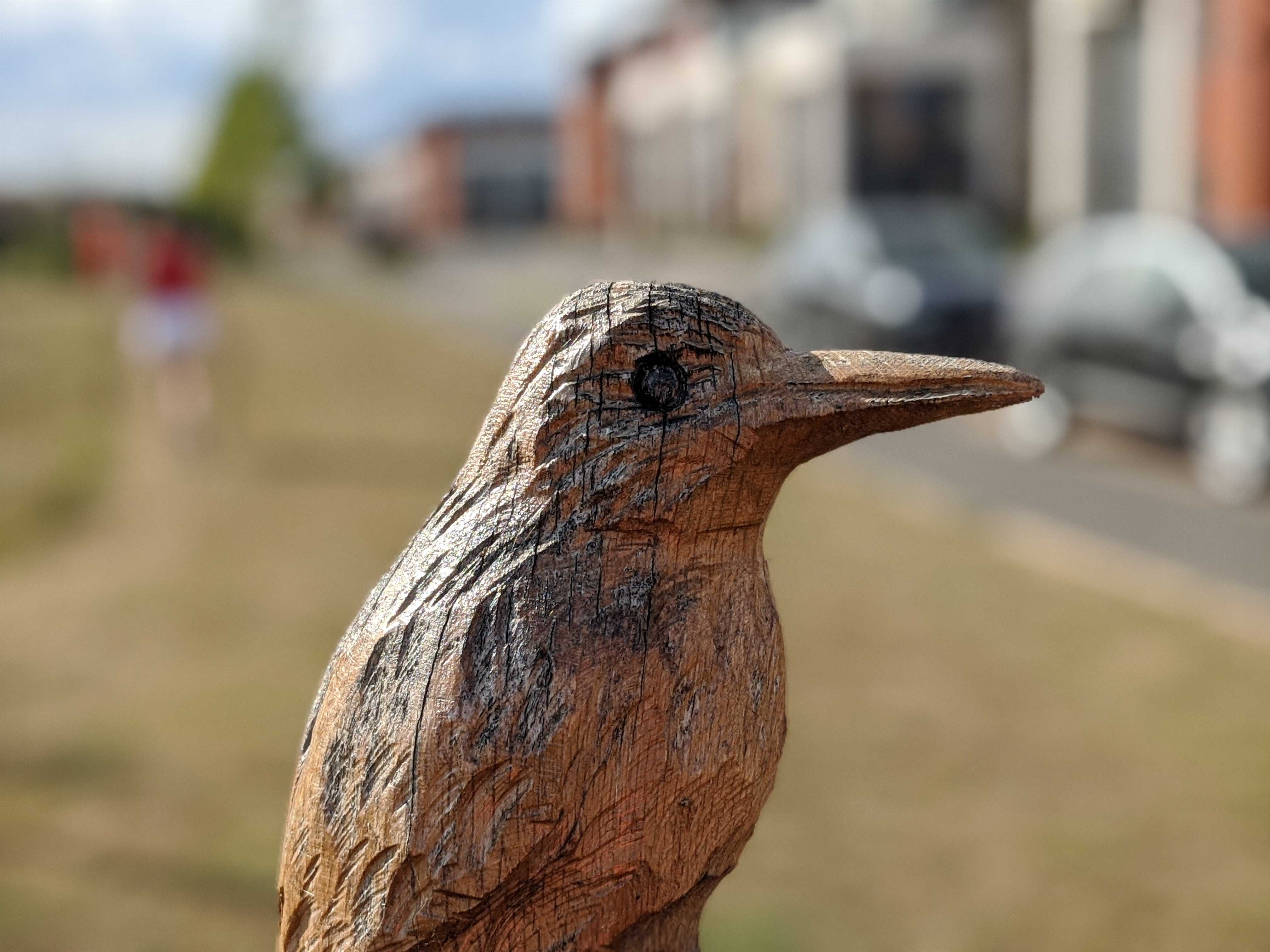
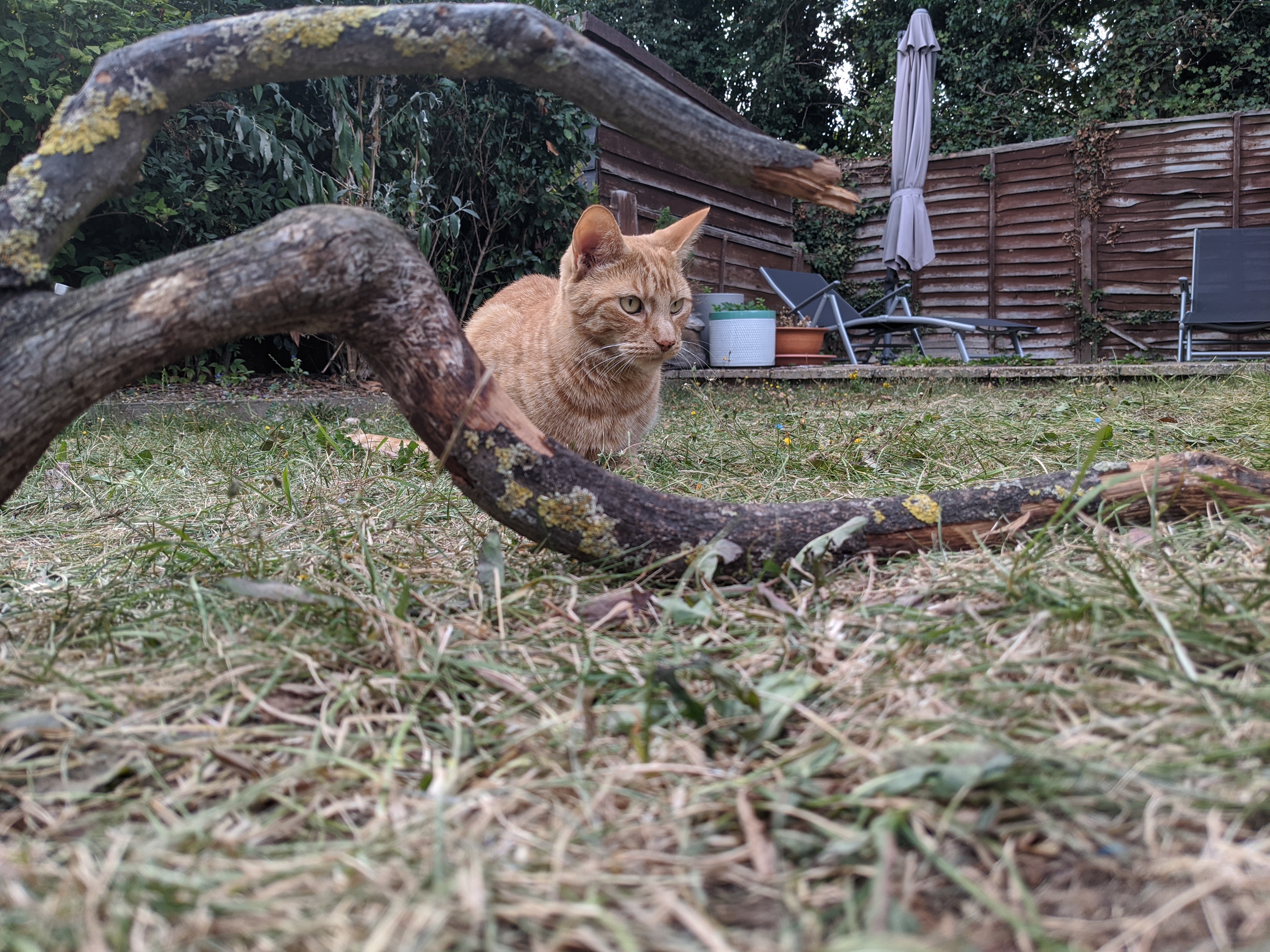
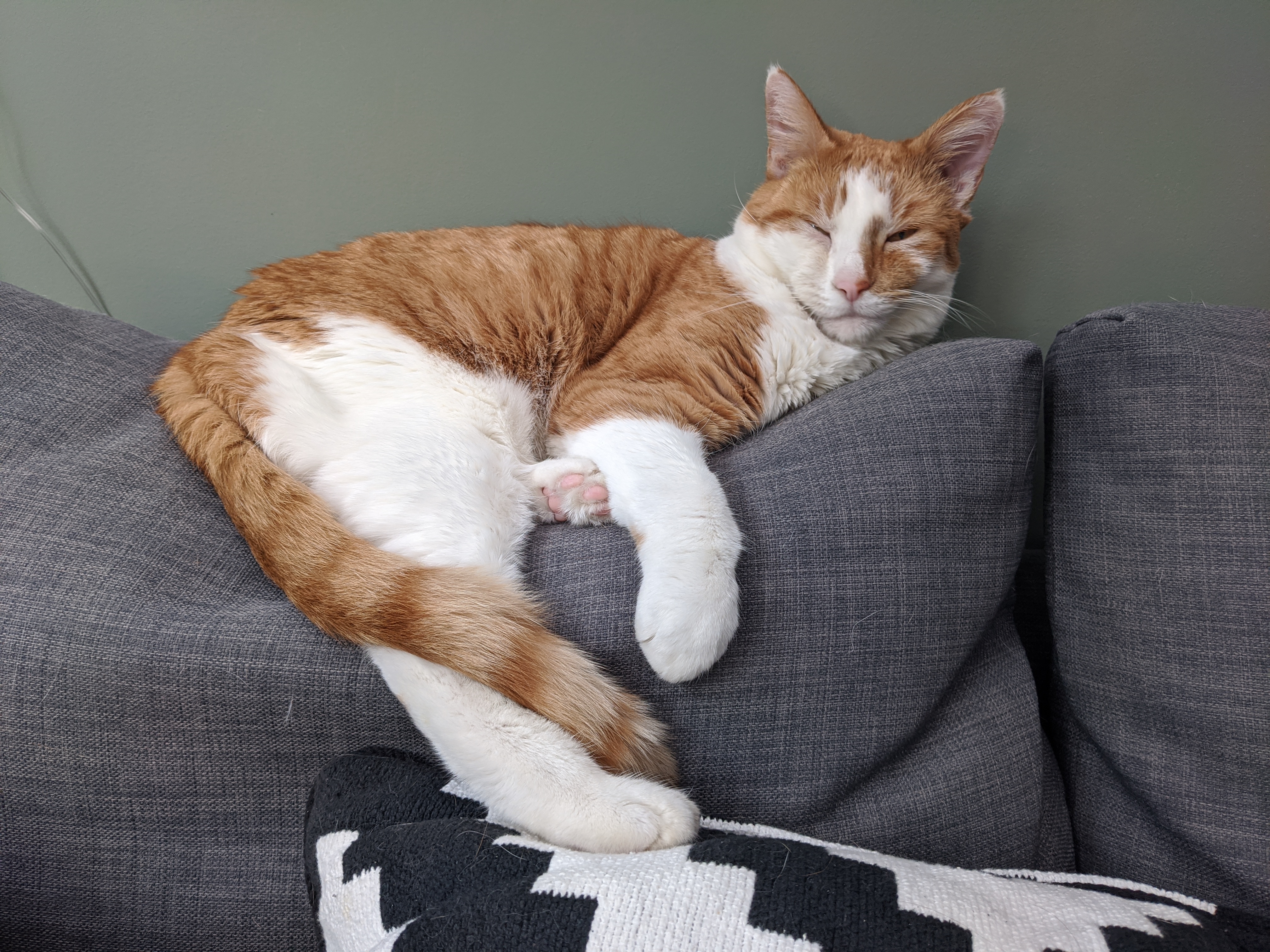
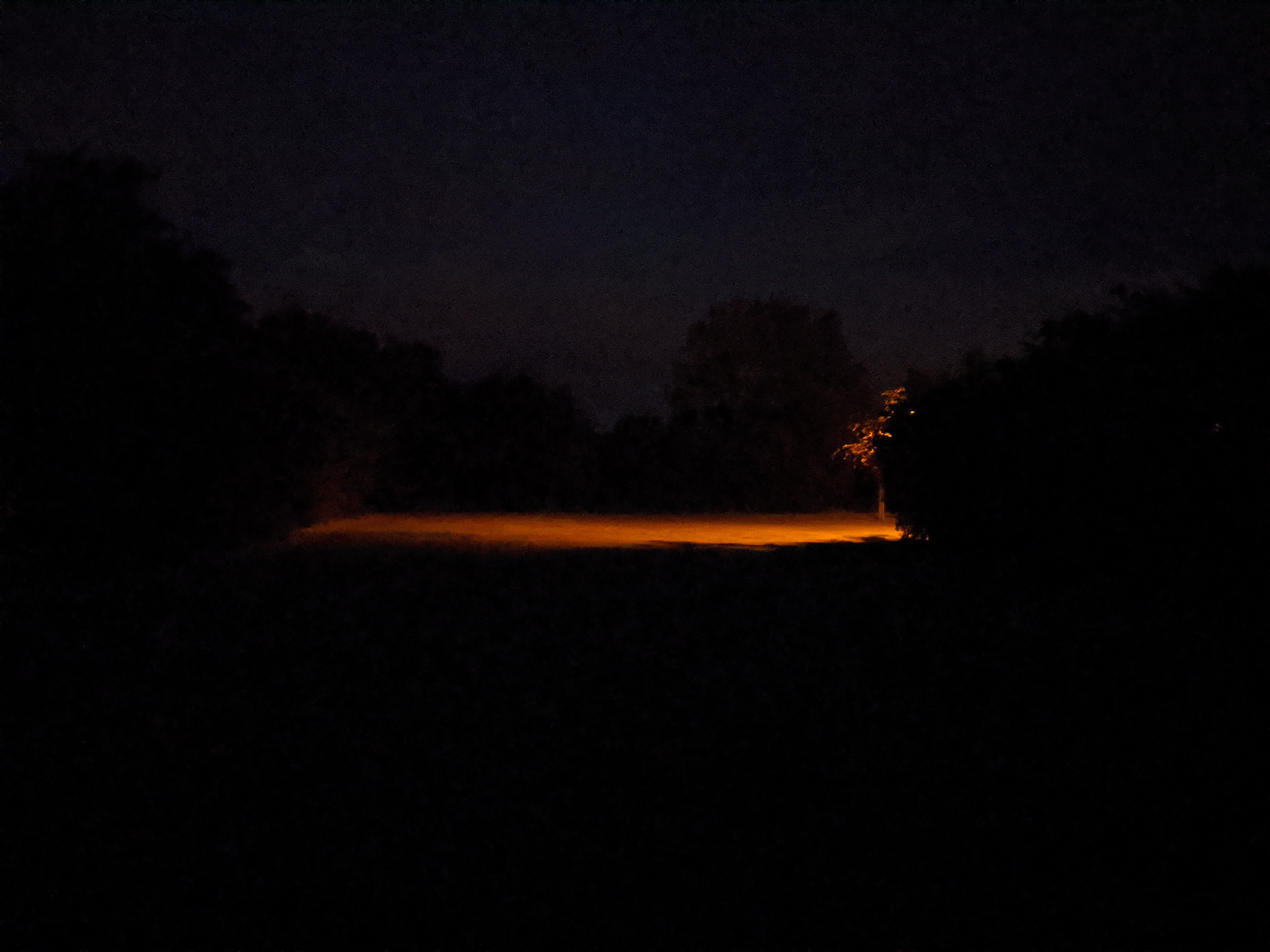


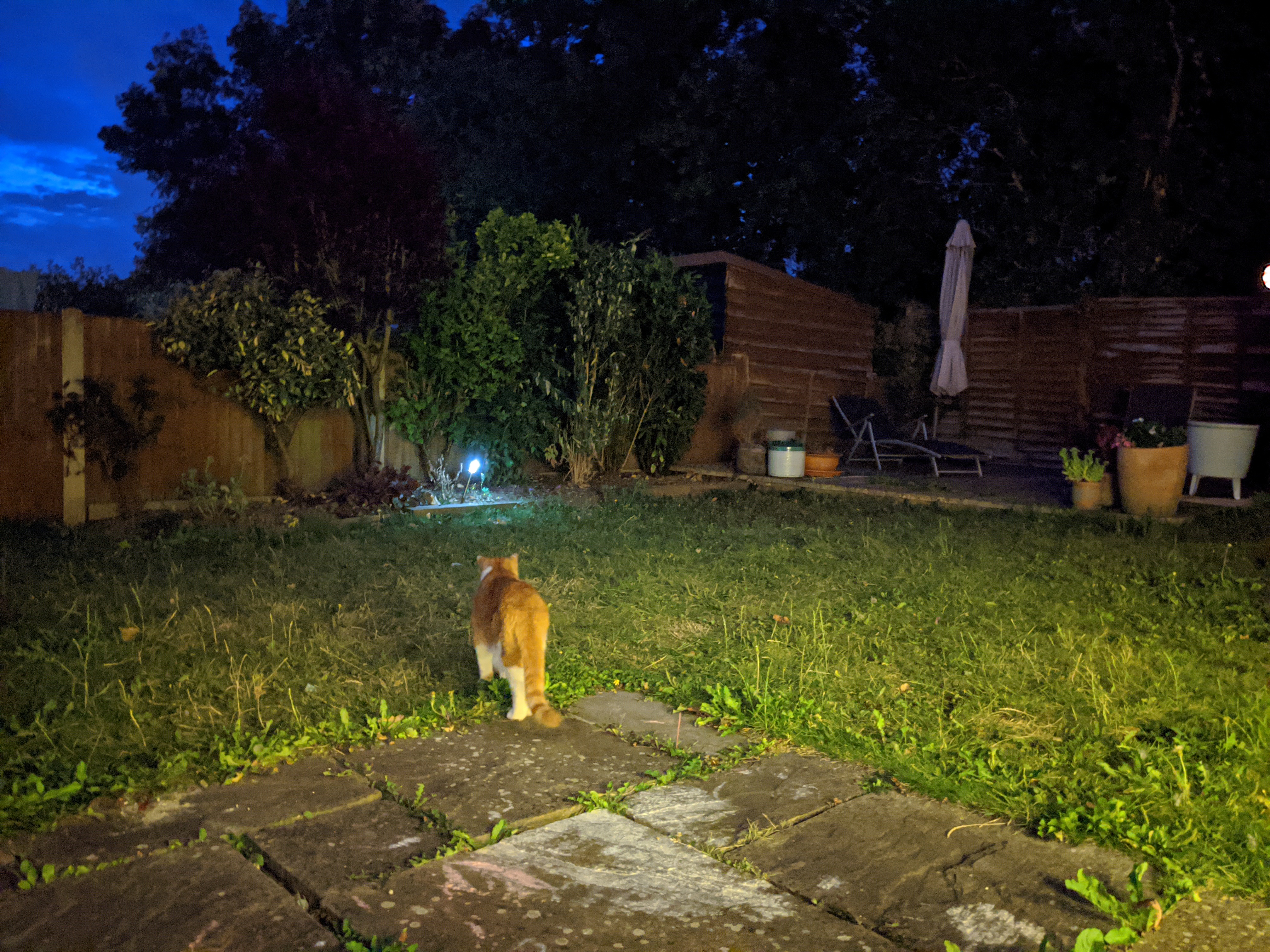


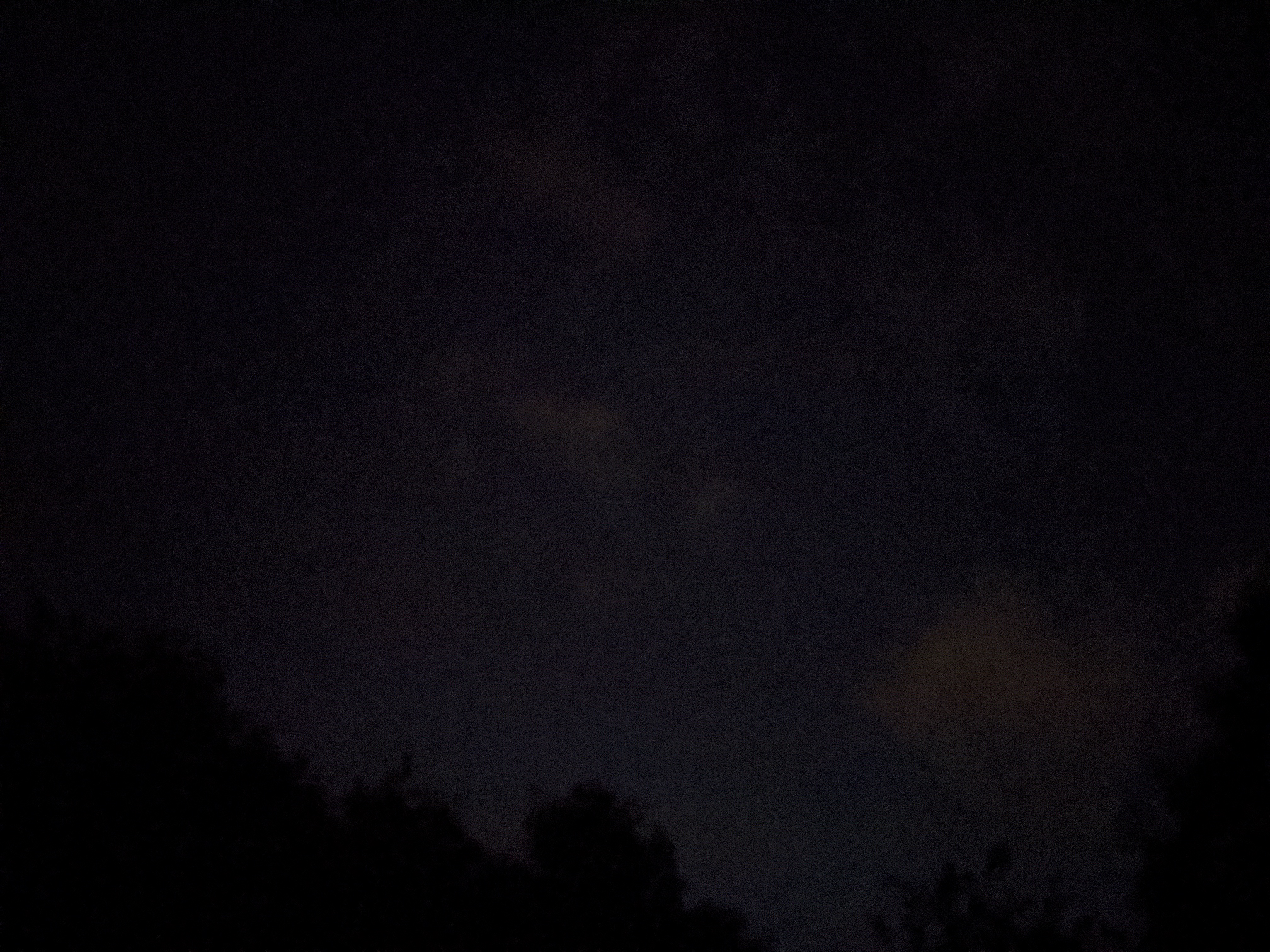

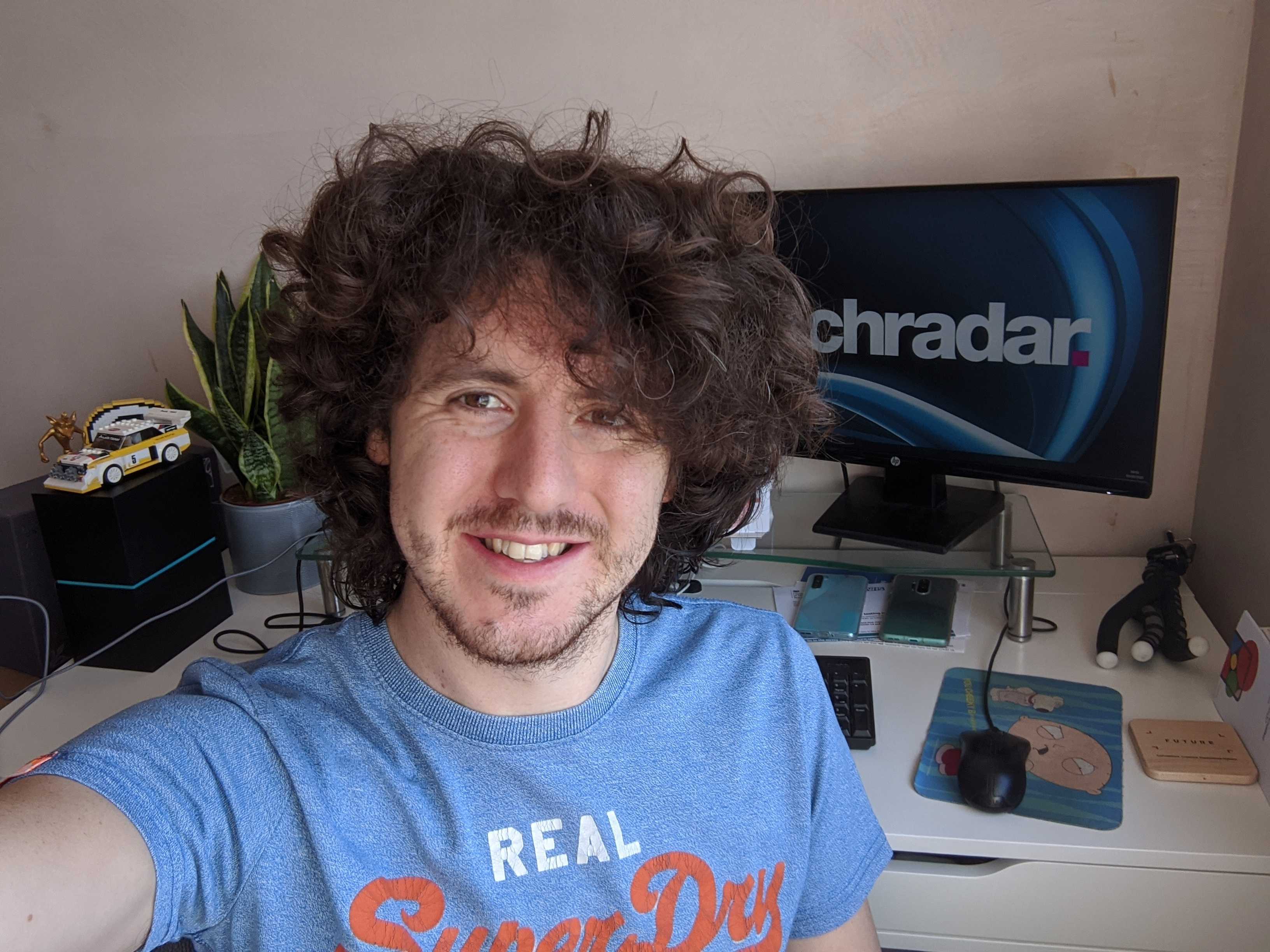
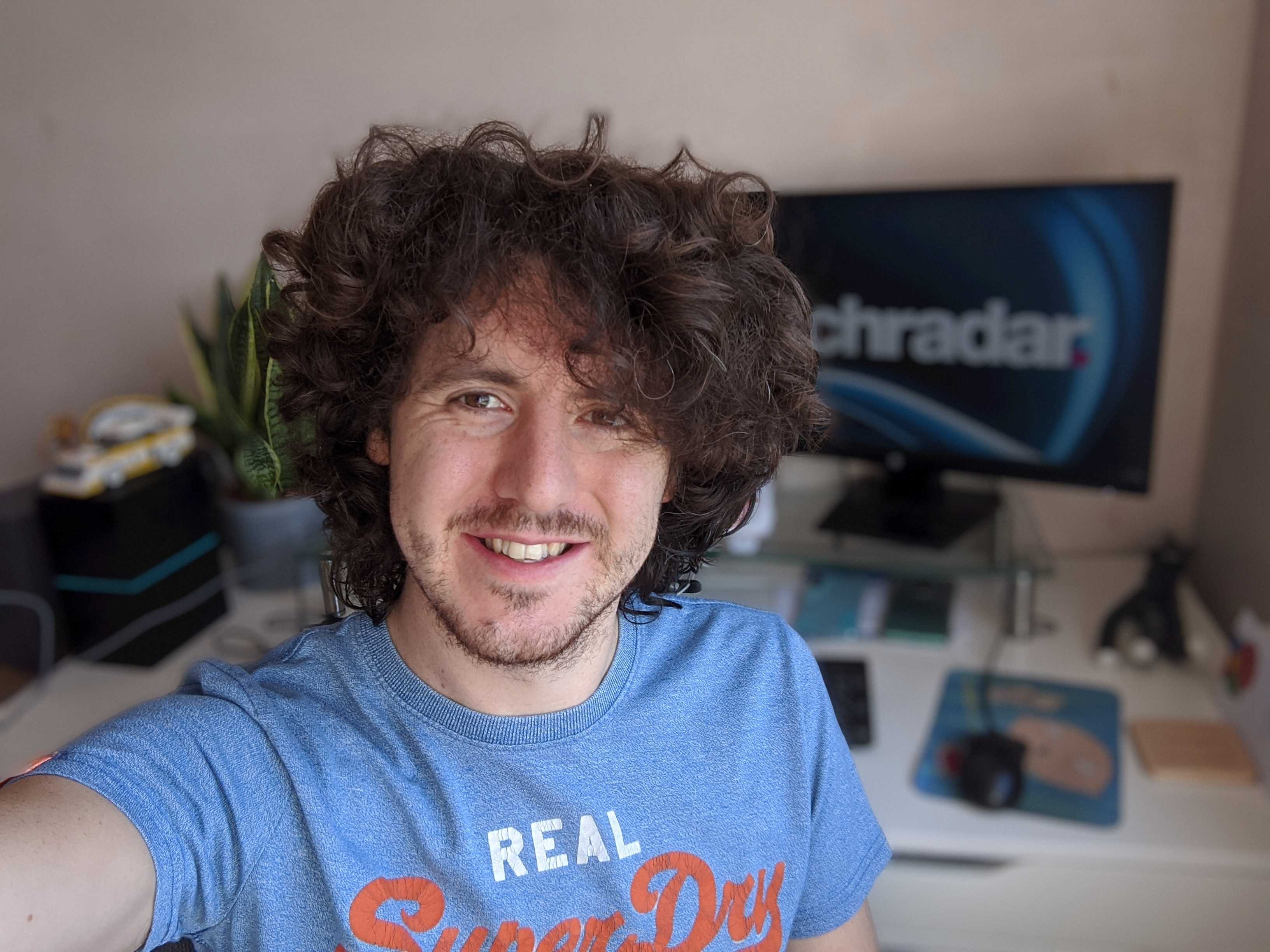
Battery life
- Should last a full day with average use
- No wireless charging, but fast 18W charger in the box
- Gaming and video playback significantly drain battery
The Google Pixel 4a comes with a 3,140mAh non-removable battery, which is larger than the power pack in its predecessor, and much larger than the 1,812mAh battery in the new iPhone SE.
Google claims you'll get up to 24 hours of battery life from a single charge thanks to the firm's Adaptive Battery technology, although we didn't quite manage to achieve that.
We did find that the Pixel 4a tended to make it through a full day (from 7am to 11pm) with average use, although we'd regularly turn in for the night with the battery level in the low teens and sometimes even single digits.
This was with the always-on display activated, and switching it off did result in slightly better battery life, although we were still ending the day below 20%. In short, the Pixel 4a is a smartphone you'll need to be charging each night.
And the battery does take a bit of a beating when it comes to gaming or video playback. Three hours of gaming plus three hours of music streaming over Spotify via Bluetooth headphones helped deplete the Pixel 4a's battery to a level where we needed to reach for the charger by early evening.
Something we did find very useful was seeing the estimated time when the battery will run out in the notification bar. It's not shown permanently – you're shown the battery icon and a percentage-remaining next to it – but pull down the notification shade and the percentage is replaced by the estimated time when the Pixel 4a will run out of juice.
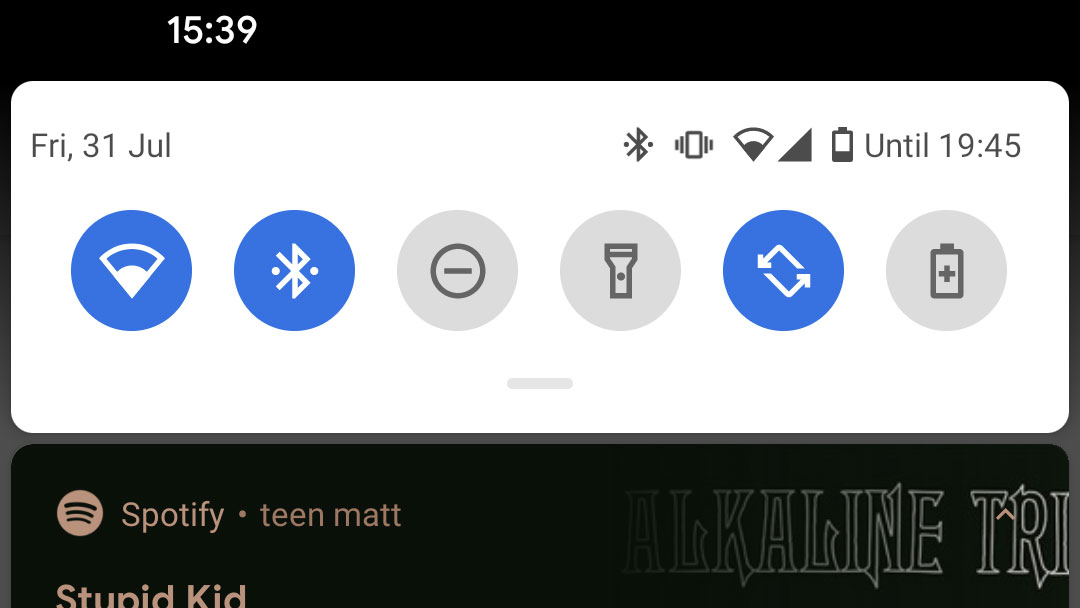
It's a far more useful metric, and gives you a better idea of whether you'll need to plug the handset in for a quick charge, or whether that remaining 20% will see you through the rest of the day.
There's no wireless charging support here – not a huge surprise given the mid-range price – but you do get an 18W charging block included in the box with the Pixel 4a, providing the handset with fast charging capabilities.
In our tests, a 15 minute fast charge saw the Google Pixel 4a recoup around 20% of battery, while 30 minutes of top-up saw around 35% returned to the tank. It's reasonable, but not as fast as we've seen from other handsets.
Performance and software
- Snapdragon 730, 6GB of RAM, 128GB of storage
- Stock Android 10 is clean and easy to use
- Google Assistant features prominently
The Google Pixel 4a comes with enough power to ensure you can do everything you want on the phone. You get a Snapdragon 730 chipset, 6GB of RAM and 128GB of storage (of which around 108GB is actually available to you).
These specs are more than acceptable at the Pixel 4a's price, but an issue arises if you start to look around, because in terms of the spec sheet the Google Pixel 4a is out-gunned by rivals in a number of ways.
There are plenty of similarly priced handsets offering newer chipsets, more RAM, and a variety of storage options – not to mention a whole array of cameras. Google isn't being drawn into the specs arms race, and that may make it harder for the Pixel 4a to stand out.
It can handle any app or game that you run, but you may find that some take a second or two longer to load than you'd like, especially big online games or intensive applications.

PUBG, for example, runs at HD graphics and with the frame rate set to high, but load screens and the menu system do take a noticeable amount of time to load.
Once you're in-game PUBG runs smoothly enough, and we were able to claim some chicken dinners, although the graphics aren't running at their highest levels.
The Pixel 4a comes with Google's stock Android 10 operating system, which runs well and is easy to navigate. You can opt for gesture controls over the traditional navigation buttons at the bottom of the screen, and after a bit of practice the former make one-handed use even easier.
Google guarantees you a minimum of three years of operating system and security updates for the Pixel 4a, which means the handset is set to get the major Android 11, Android 12 and Android 13 updates.
As on all Pixel devices there's a big focus on Google Assistant on the Pixel 4a, with multiple ways to summon the voice assistant. If you have gesture controls enabled you can swipe in from either corner at the bottom of the screen to trigger Assistant, or you can use the wake words 'Hey Google' or 'Okay Google'.
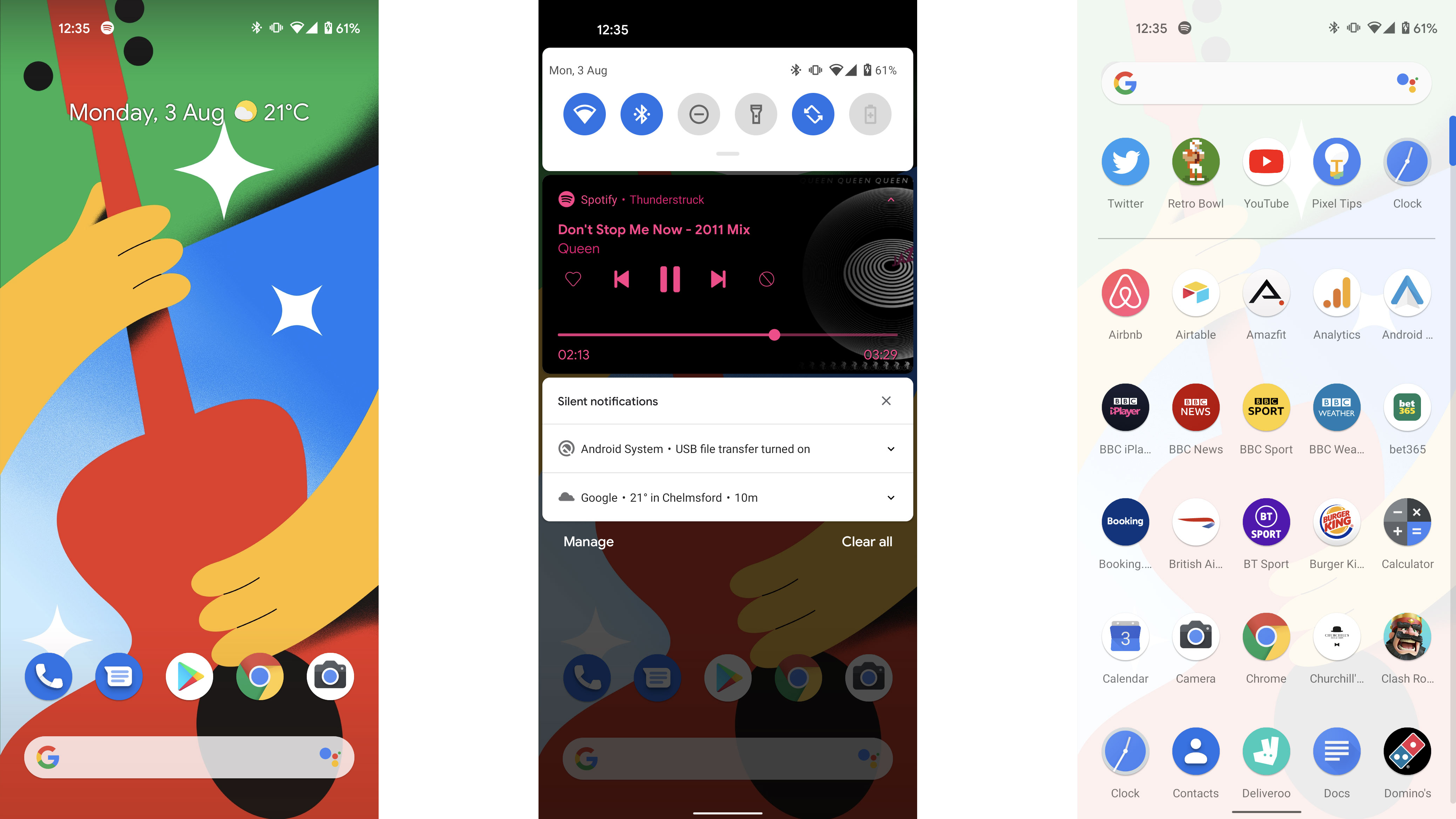
Once it's active, you can get Assistant to do numerous things, from opening apps and setting alarms to sending messages, searching for restaurants, or providing the definition of a word. The slick integration with the Pixel 4a allows for a more hands-free experience, and can reduce the amount of swipes and taps required to perform certain tasks.
Google's voice recognition software is very good, and the Pixel 4a didn't have too much trouble understanding what we were saying; you do need to talk relatively clearly though, as mumbled words can sometimes be misunderstood.
The Pixel 4a also inherits the search giant's Recorder app, which can live-transcribe meetings and conversations. You can ask the assistant to start and stop recordings, and transcriptions can be imported to Google Docs for easy editing.
All transcription happens on-device, and there's no need for an internet connection, which means you can use Recorder anywhere, safe in the knowledge that recordings aren't being stored off-device.
The transcription accuracy is good, but it's certainly not perfect – if you speak quickly, without clear pronunciation, it can easily get a little confused, for example between 'three' and 'free'. However, it gets the majority of what’s being said right, and it makes the writing-up process a lot easier.
Should I buy the Google Pixel 4a?
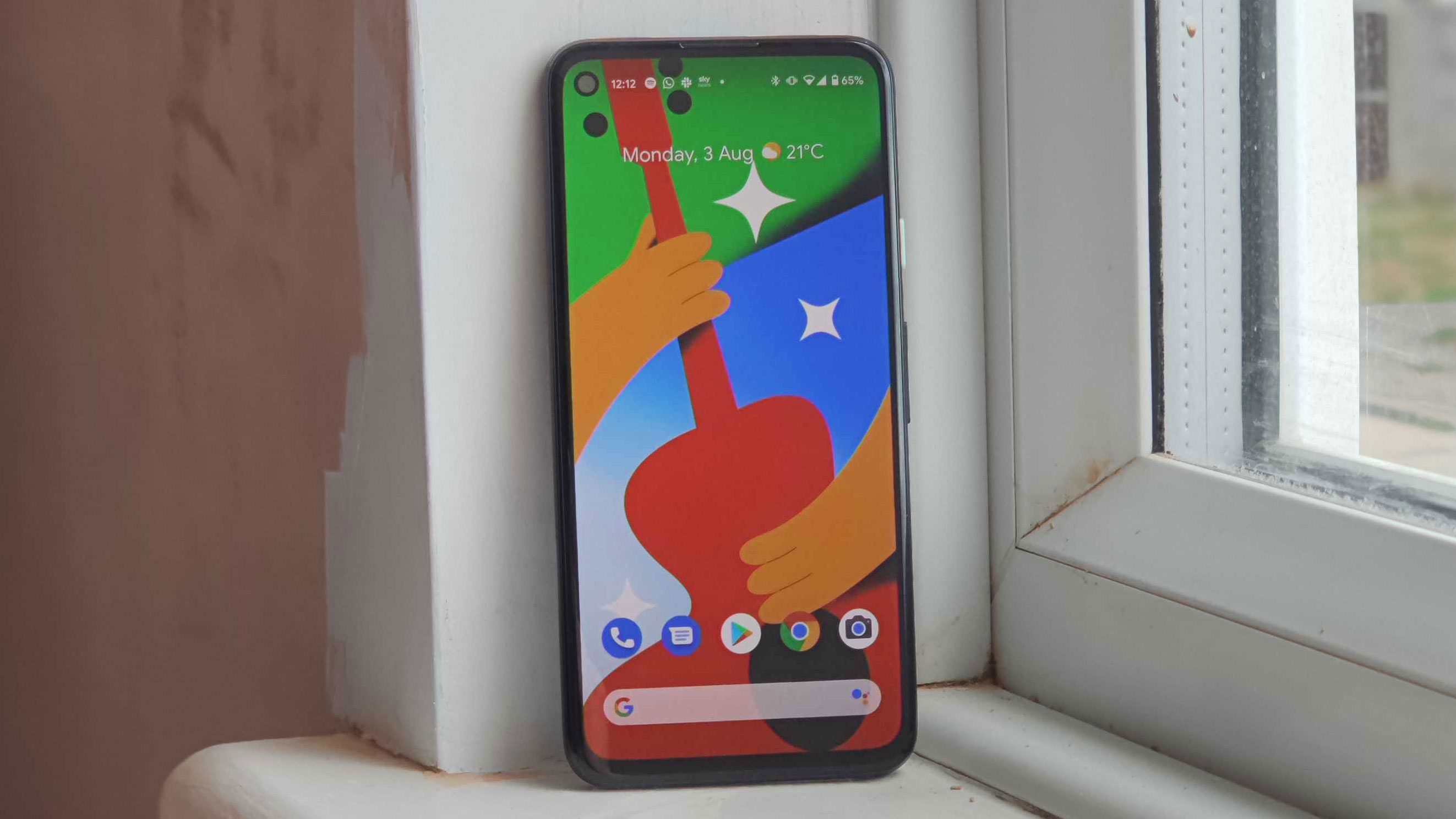
Buy it if…
You want a phone you can use one-handed
There aren't too many smartphones around these days which you can comfortably use one-handed, but the Google Pixel 4a is one of them. Its compact (by 2020 standards) form factor, rounded edges and soft-touch polycarbonate body make it easy to hold and use.
You're invested in the Google ecosystem and want an affordable device
If you're fully invested in Google's ecosystem, embracing Google Assistant and using the firm's smart speakers in your home – and perhaps you even have Android Auto in your car – the Pixel 4a will fit into your setup pretty seamlessly. For those familiar with 'Okay Google' commands, the Pixel 4a is just an extension of what you already know.
You want an affordable phone that takes great, fuss-free photos
The two cameras on the Google Pixel 4a may not offer the greatest flexibility at this price point, but they do offer an easy point-and-shoot experience which, more often than not, means you can take quality photos with very little effort.
Don't buy it if...
You're looking for the best bang for your buck
The Google Pixel 4a finds itself in a competitive field, and on paper it can't compete with the spec sheets of many of its competitors. Rival handsets boast 5G connectivity, multiple cameras, bigger screens, more power, larger storage options and premium designs – things the Pixel 4a simply doesn't have.
You want to do a lot of gaming on your phone
While the Google Pixel 4a is perfectly capable of running games, it comes with a few compromises. The smaller screen (although it's still 5.8 inches) means there's less real estate for your eyes to lock onto – and your thumbs will cover some of it – while battery life takes a bit of a beating, and the phone doesn’t have the same power as its competitors, meaning slightly longer load times.
You want a long-lasting battery
The Google Pixel 4a gets through a day on a single charge – just. If you have a penchant for gaming, or you're a heavy camera and social media user, you'll be reaching for the charger come mid-afternoon/early evening. In short, if you get the Pixel 4a, you'll need to charge it every night, minimum.
Also consider
Now that you've read our Google Pixel 4a review, check out some other similar phones that you might want to consider.

OnePlus Nord
The OnePlus Nord has a bigger screen, more RAM, more storage, more power, six cameras and a premium design - which on paper makes it look like a sure-fire winner considering it's only a touch more expensive than the Google Pixel 4a - but the 4a does a lot with its more humble spec sheet.
Read our in-depth OnePlus Nord review
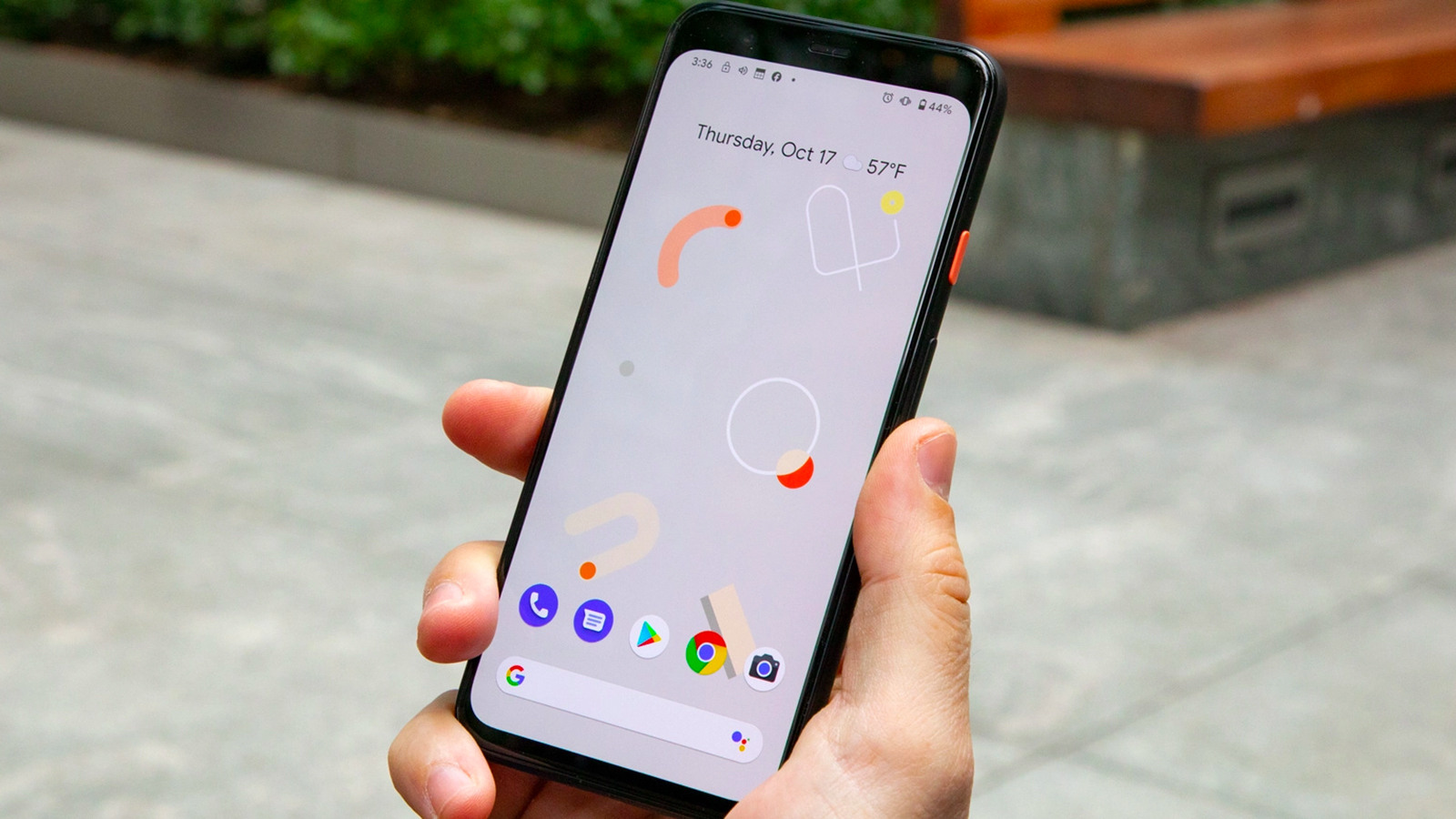
Google Pixel 4 and 4 XL
If you're looking for the very best of Google, then you'll want to consider the Google Pixel 4 and 4 XL. These full-fat, flagship siblings to the mid-range Pixel 4a pack in more power, a larger screen (in the case of the XL) and boast even more impressive cameras - with two on the rear of each.
Read our in-depth reviews: Pixel 4 | Pixel 4 XL
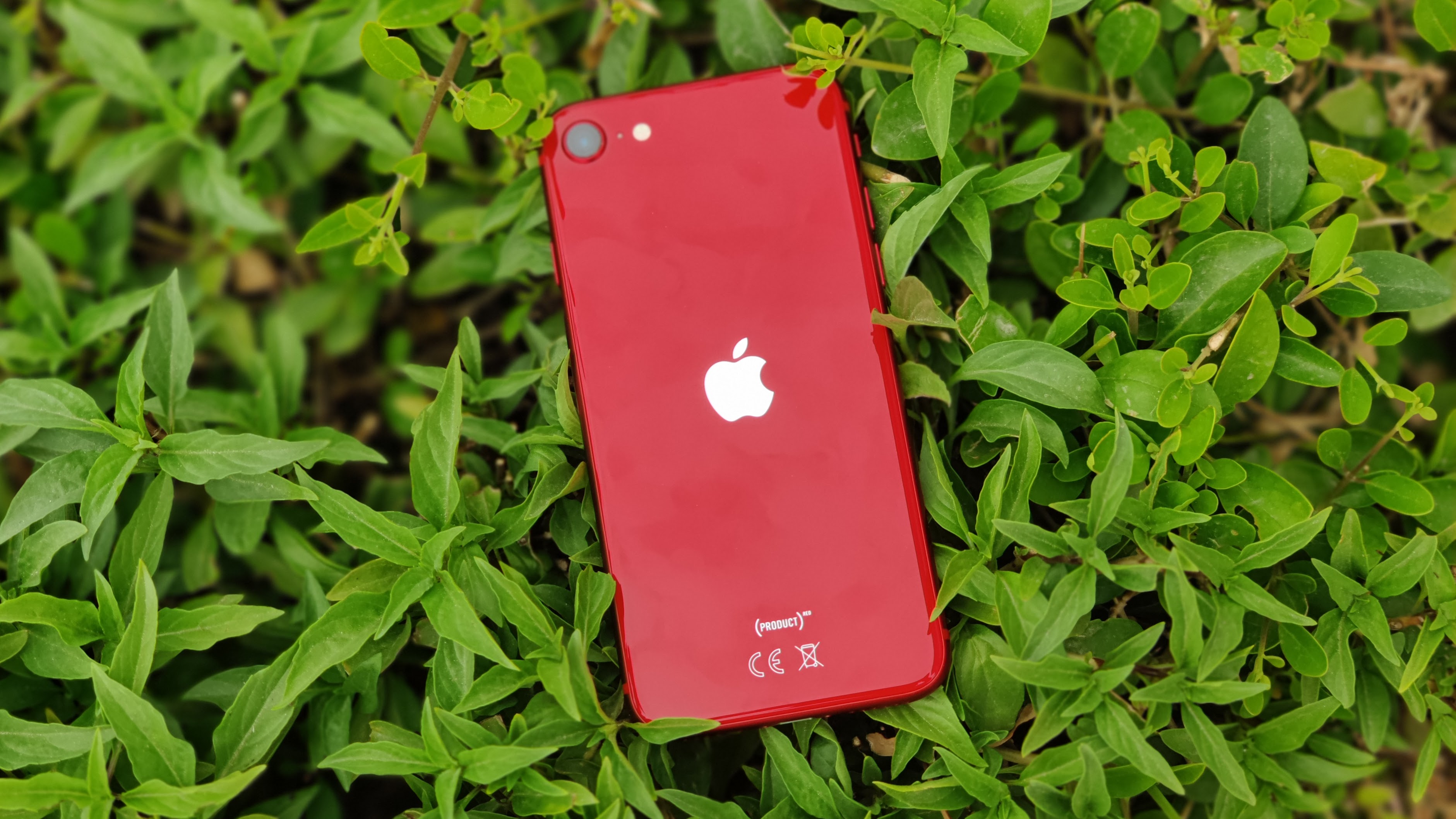
iPhone SE (2020)
If you're in the market for a compact, mid-range handset that you can easily use one-handed, there's another big name offering for you to choose from - the new iPhone SE. Unsurprisingly it runs iOS and not Android, but if the former is your preference this is the compact smartphone for you.
Read our in-depth iPhone SE review
First reviewed: August 2020

TechRadar's former Global Managing Editor, John has been a technology journalist for more than a decade, and over the years has built up a vast knowledge of the tech industry. He’s interviewed CEOs from some of the world’s biggest tech firms, visited their HQs, and appeared on live TV and radio, including Sky News, BBC News, BBC World News, Al Jazeera, LBC, and BBC Radio 4.
